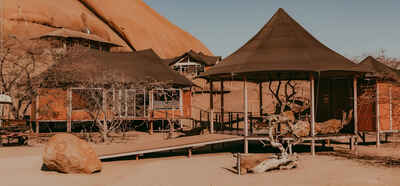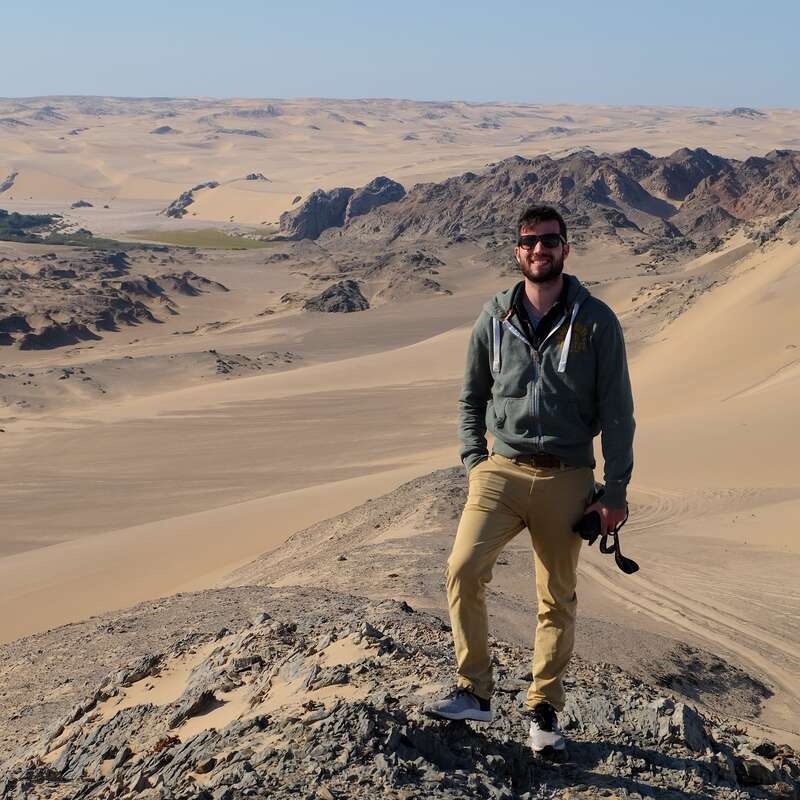About Spitzkoppen Lodge
At last, travellers can explore the majesty of the Spitzkoppe massif from a comfortable, attractive lodge in a dramatic setting.
Strung out among the boulders at the foot of the mountain, Spitzkoppen Lodge is almost dwarfed by the surrounding grandeur.
Granite boulders smoothed over millennia gleam red in the evening sun, their nooks and crannies populated by busy rock hyrax. Deep in those crevices are hidden galleries of San rock art, hinting at the history of these ancient hills. And high above looms the lofty pinnacle that is Spitzkoppe itself.
Sensibly, the brains behind the lodge have kept their touch light, letting the setting speak for itself. High walkways weave over and around the rocks between the chalets and the hub of the lodge, with mountain views or hidden crannies at almost every turn.
Light floods into the rooms and the central area from giant picture windows, with natural wood and soft fabrics adding to the sense of space. And the pool – set into a natural depression with magnificent views from the surrounding rocks – simply adds to the drama.
Head out across the plains from your chalet and explore the private reserve in solitude, or join a guided walk or drive, perhaps taking in the Zebra Pool or a magnificent rock arch. Then return to herald the sunset, drink in hand, and reflect on the wonders of nature.
Our view
We were very impressed by the quality and design of Spitzkoppen Lodge, in an area which until now has offered only camping or very basic self-catering chalets. Come to explore the interesting geological features of this sandstone landscape and the ancient rock art hidden in its midst, or just to relax and take in the grandeur of the surroundings.
Accommodation
15 chalets
Children
Best for 6+
Open
All year
Activities

4WD Safari

Birdwatching

Cultural excursion

Guided walking safari

Private activities

Self-guided walking
Traveller reviews of Spitzkoppen Lodge
47 real, un-edited reviews from Expert Africa's travellers.
Arrived 31 Mar 2025, 2 nights
"Extraordinary Spitzkoppen"
Overall rating: Excellent
Arrived 13 Oct 2024, 1 nights
"Spitzkoppen Lodge review"
Overall rating: Good
Arrived 1 Aug 2024, 1 nights
"Spitzkoppen Lodge review"
Overall rating: Excellent
Arrived 25 Jun 2024, 1 nights
"Spitzkoppen Lodge review"
Overall rating: Excellent
Arrived 10 Jun 2024, 2 nights
"Exceptional landscape at Spitzkoppen"
Overall rating: Excellent
Arrived 28 May 2024, 2 nights
"Unique setting"
Overall rating: Excellent
Arrived 16 May 2024, 1 nights
"Spitzkoppen Lodge review"
Overall rating: Average
Arrived 6 May 2024, 1 nights
"Stunning location"
Overall rating: Excellent
Arrived 8 May 2024, 1 nights
"Spitzkoppen Lodge review"
Overall rating: Average
Arrived 23 Sep 2023, 1 nights
"Spitzkoppen Lodge review"
Overall rating: Average
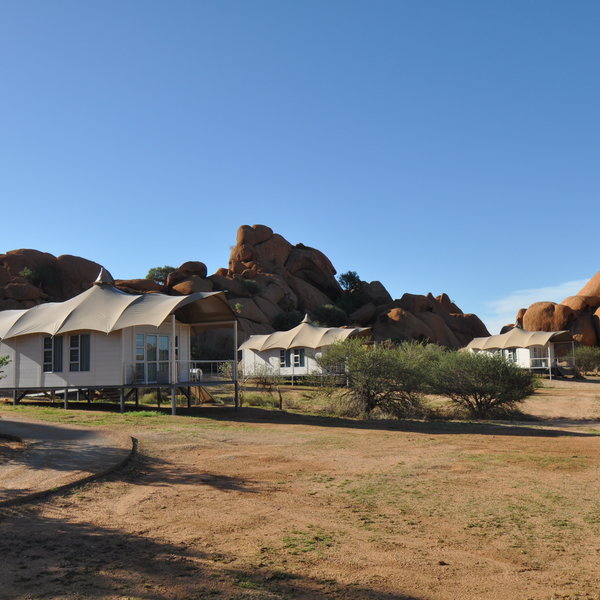
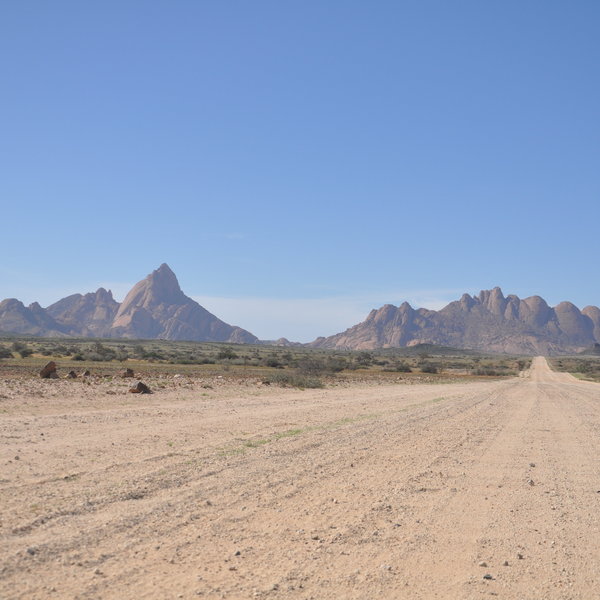
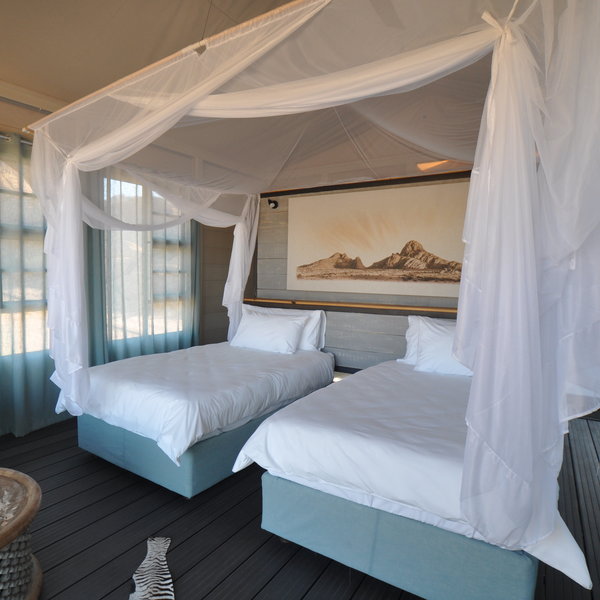
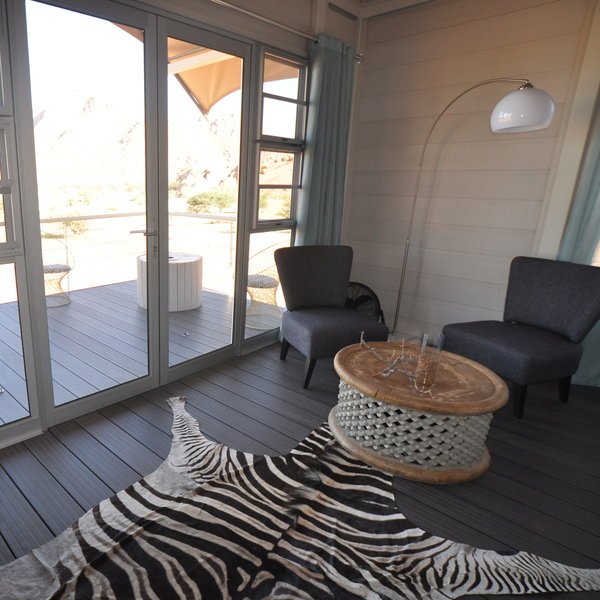
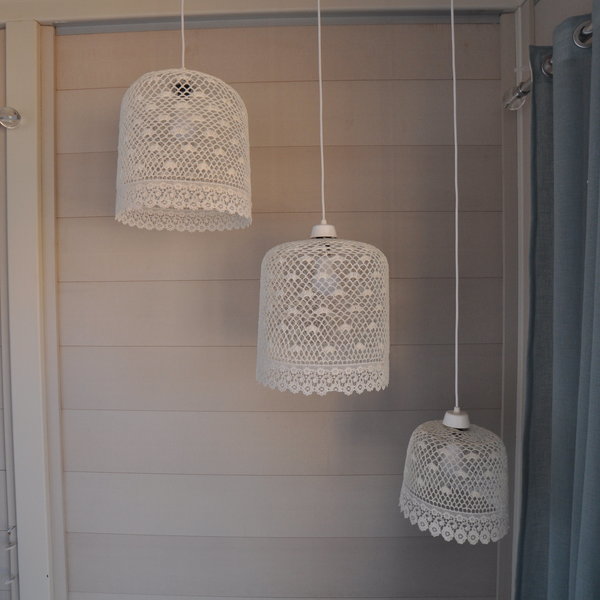
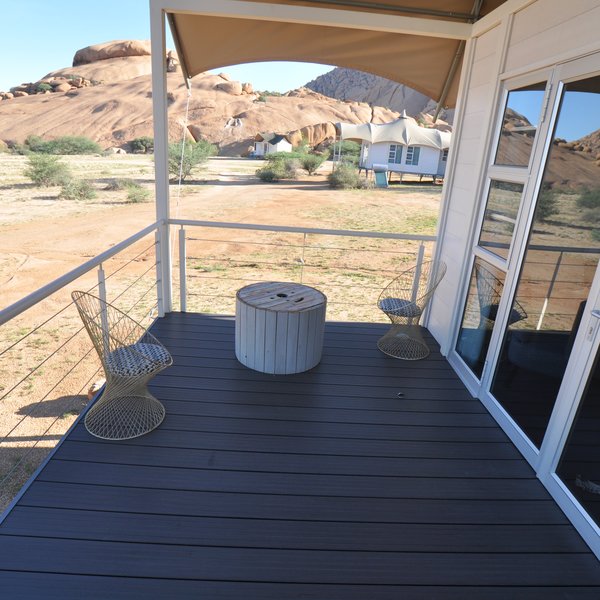
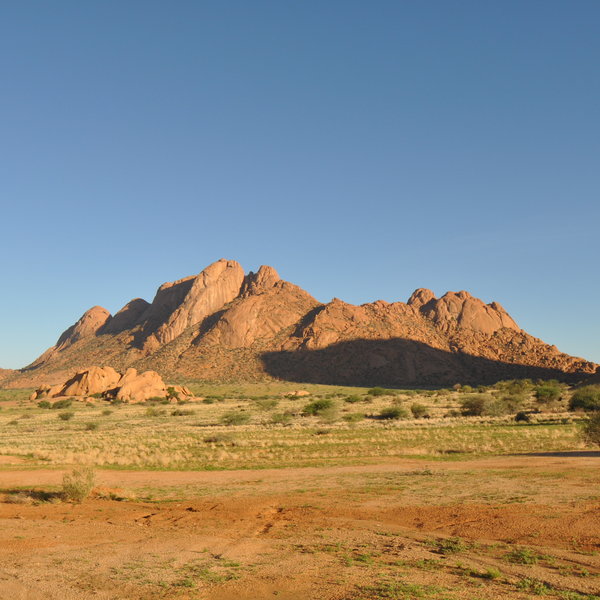
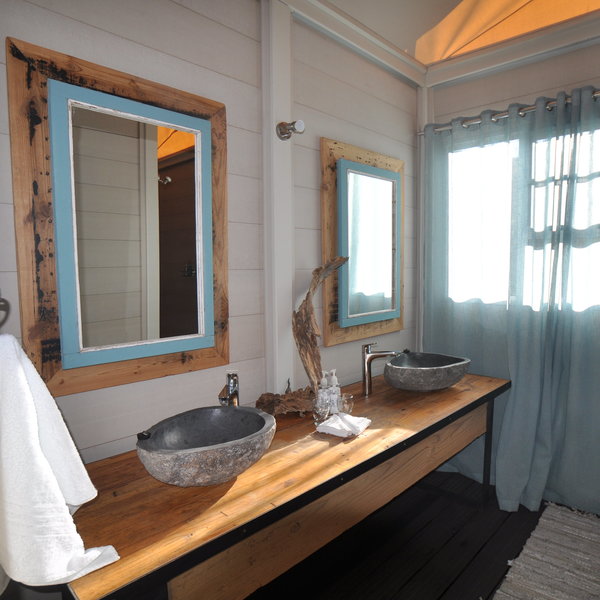
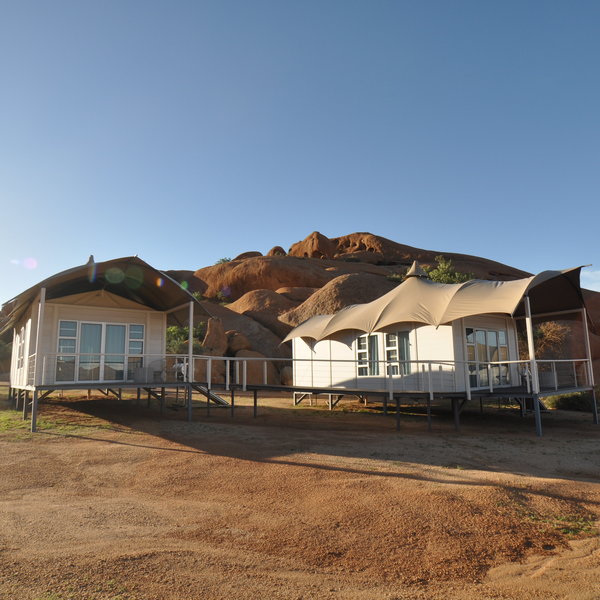
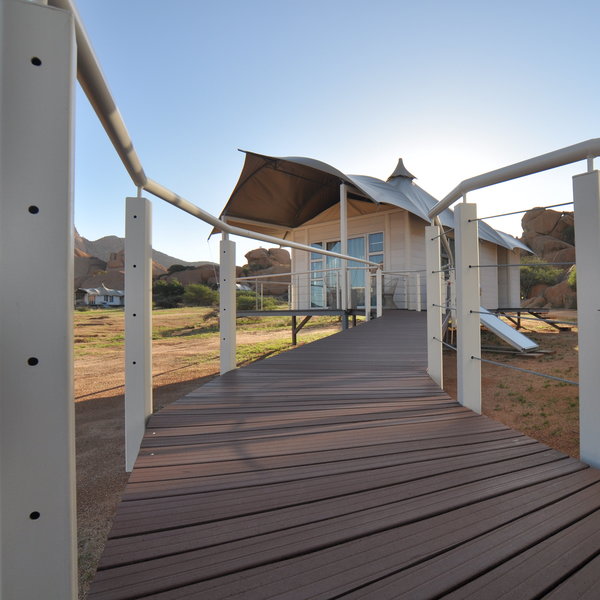
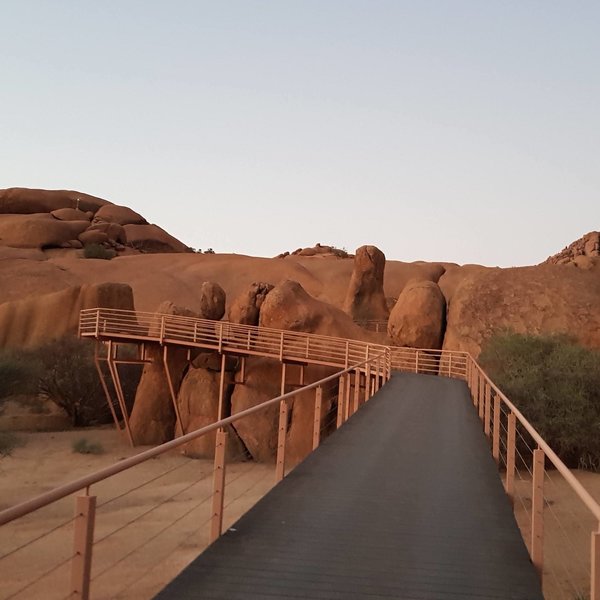
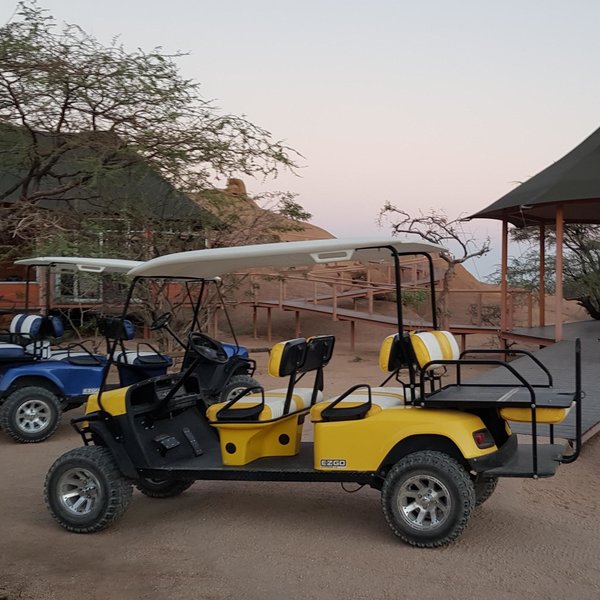
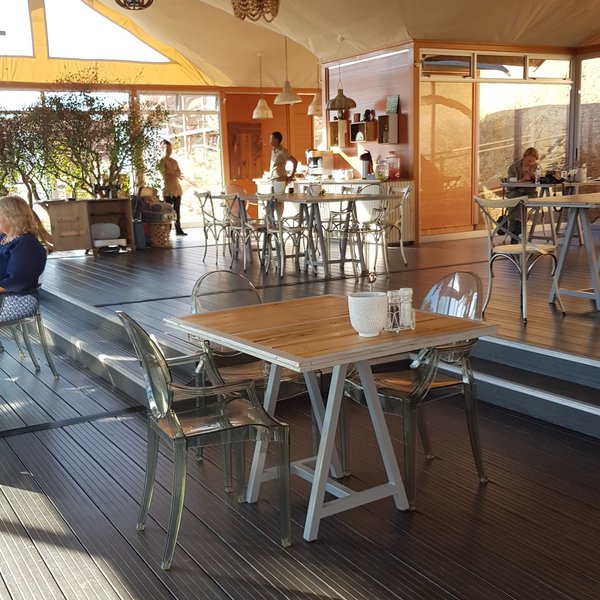
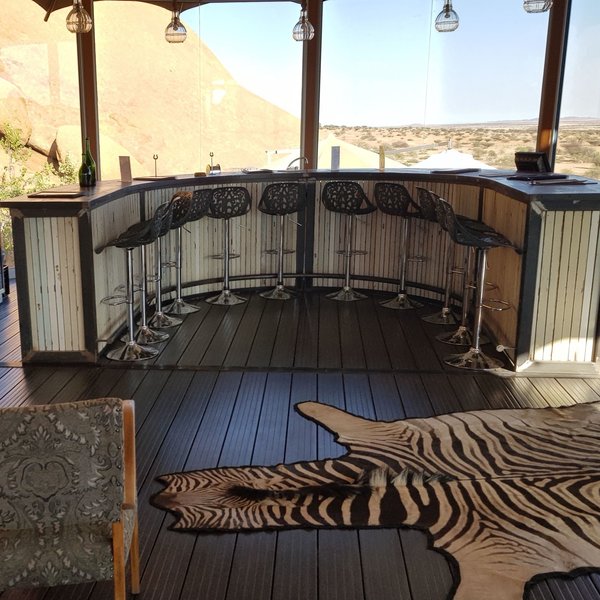
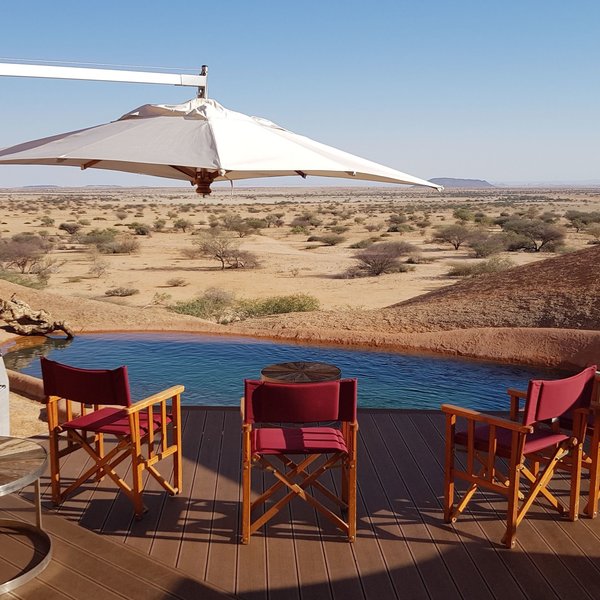
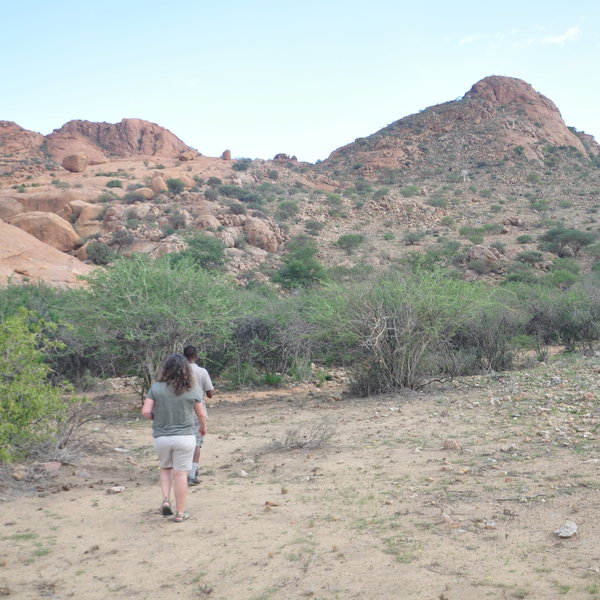
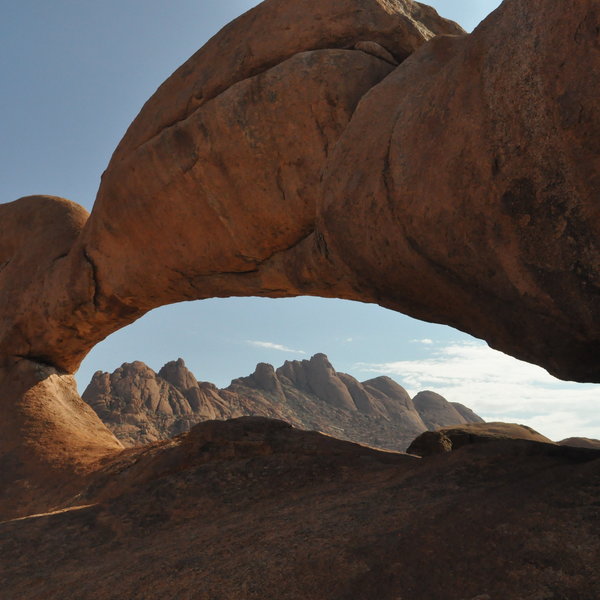
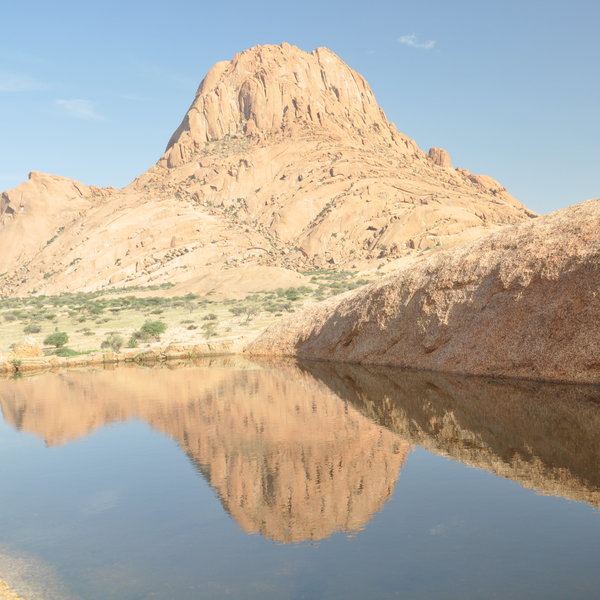
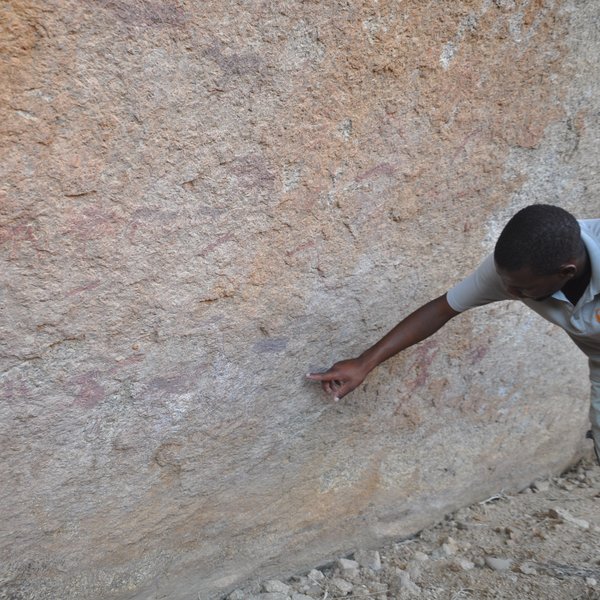
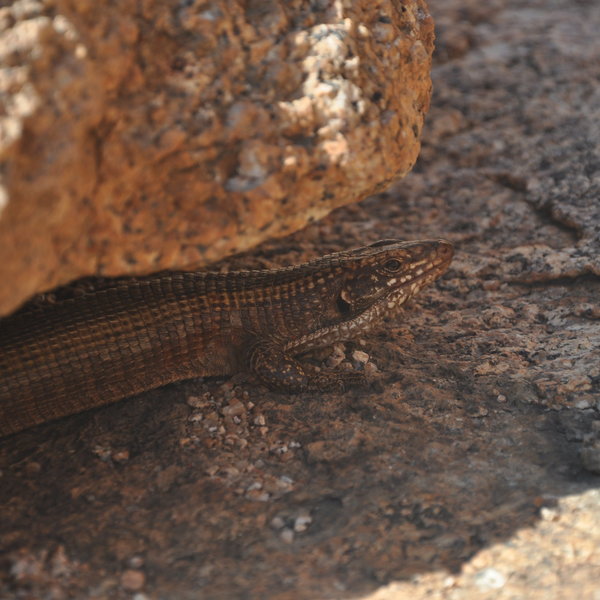
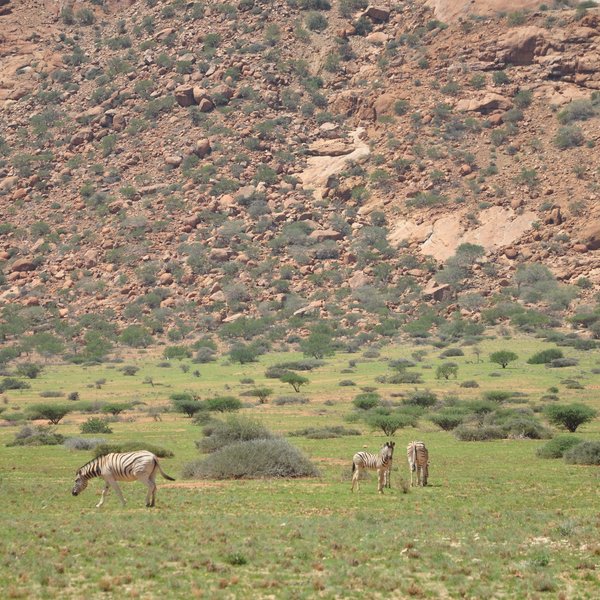
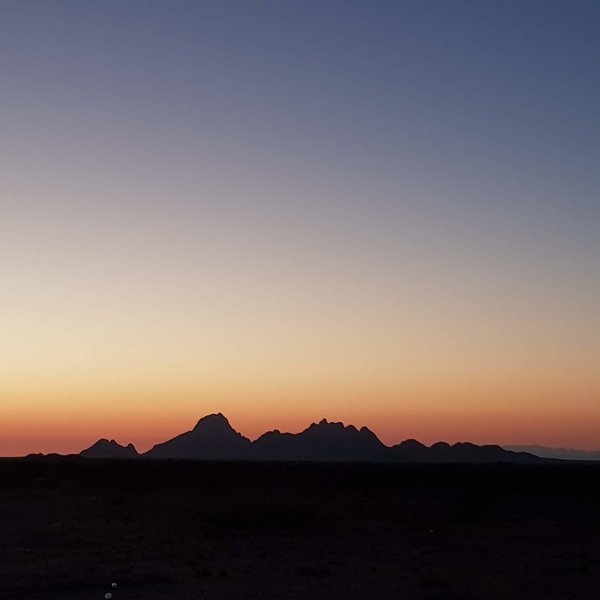
Expert Africa's gallery
When we travel we take lots of photos ourselves to give you a real and un-edited view of the safaris. See our 61 pictures of Spitzkoppen Lodge to get the candid view.
View gallerySafaris visiting Spitzkoppen Lodge
Just ideas, we'll always tailor-make a trip for you
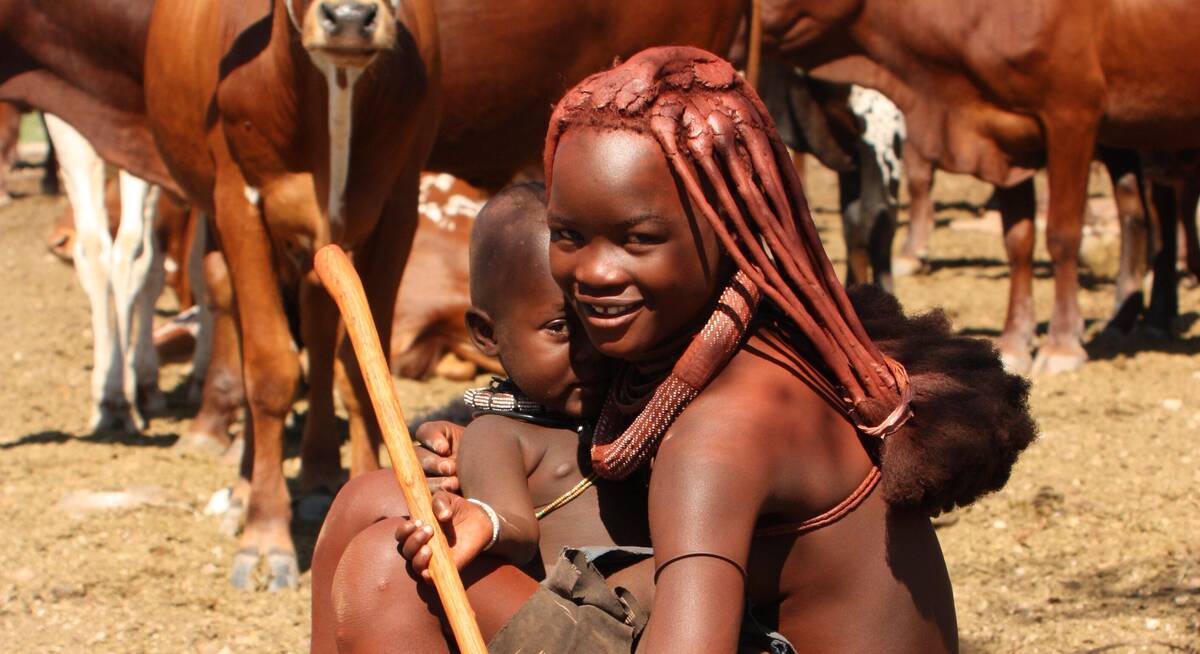
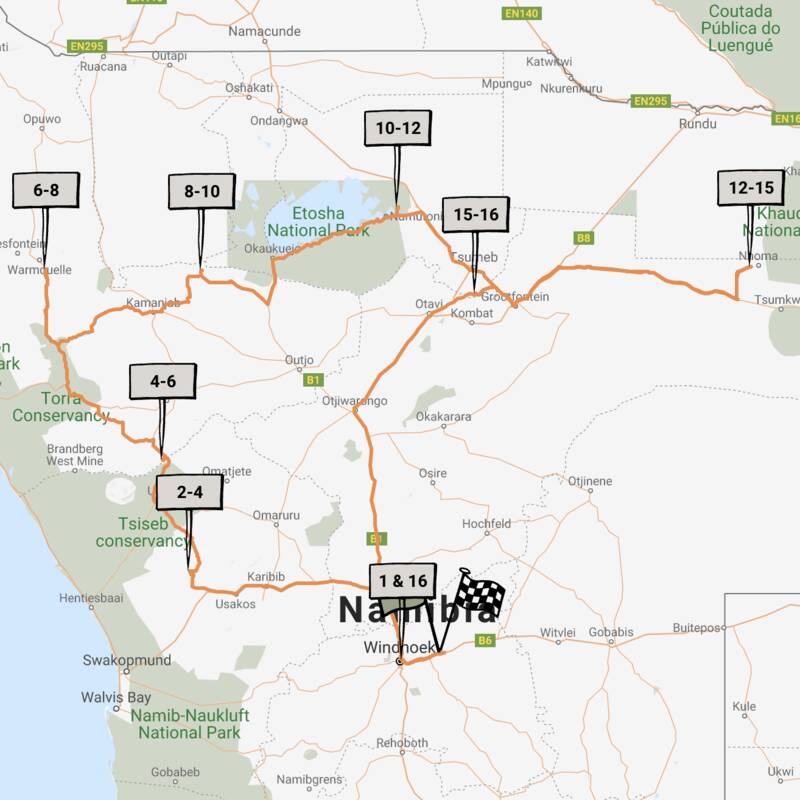
Hartebeest Self-drive Safari
16 days • 8 locations • 1 country
WINDHOEK AIRPORT TO WINDHOEK AIRPORT
This self-drive safari focuses on the best cultural experiences in Namibia. Visit a Himba village and enjoy three days living with the San Bushmen interspersed with some excellent wildlife watching.
Visiting Bushmanland, Central Highlands and 3 other areas
US$4,590 - US$4,860 per person
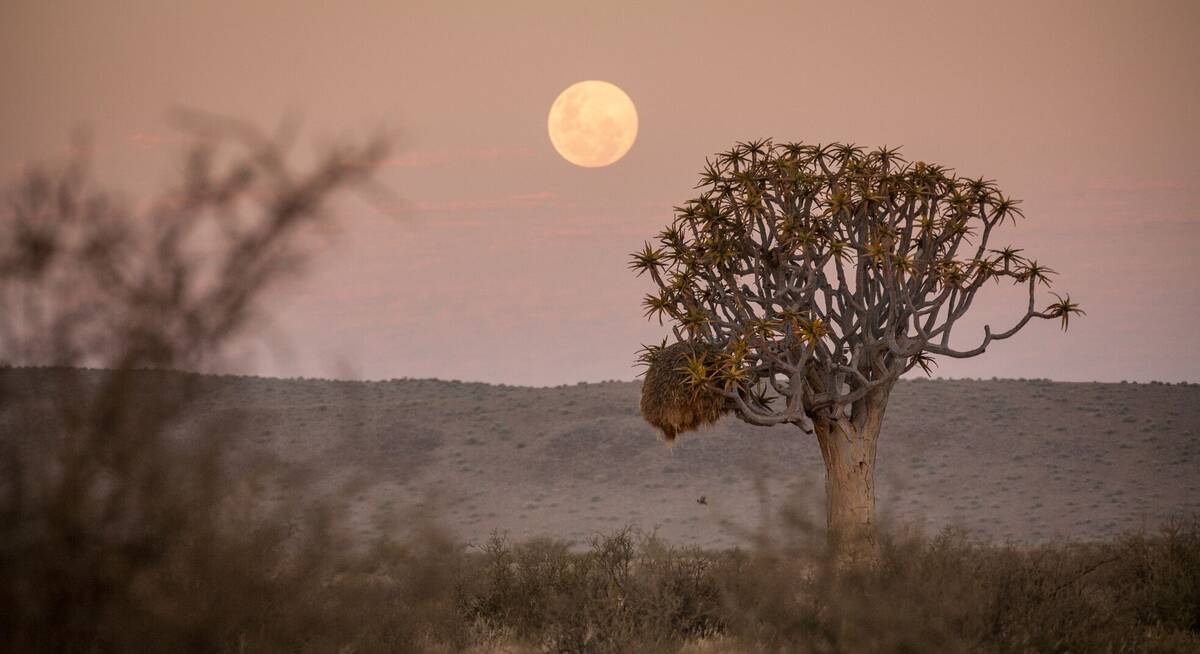
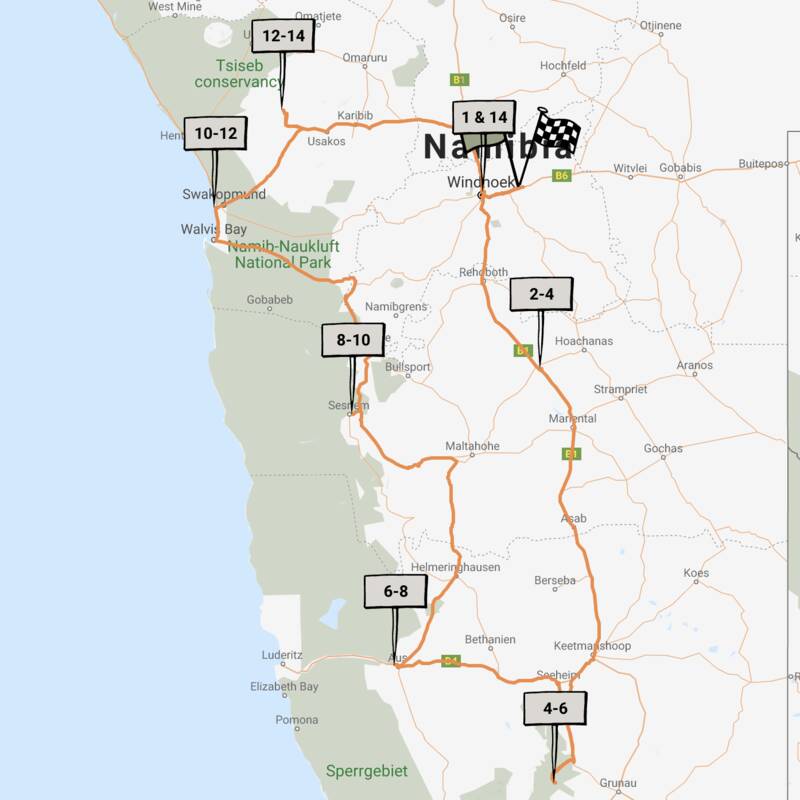
Quiver Tree Self-drive Safari
14 days • 7 locations • 1 country
WINDHOEK AIRPORT TO WINDHOEK AIRPORT
An offbeat Namibian self-drive adventure exploring the epic Fish River Canyon and fascinating Kolmanskop ghost town in the south, before turning north via the classic highlights of Sossusvlei, Swakopmund and Damaraland.
Visiting Luderitz & Aus, Fish River Canyon and 5 other areas
US$3,480 - US$3,690 per person
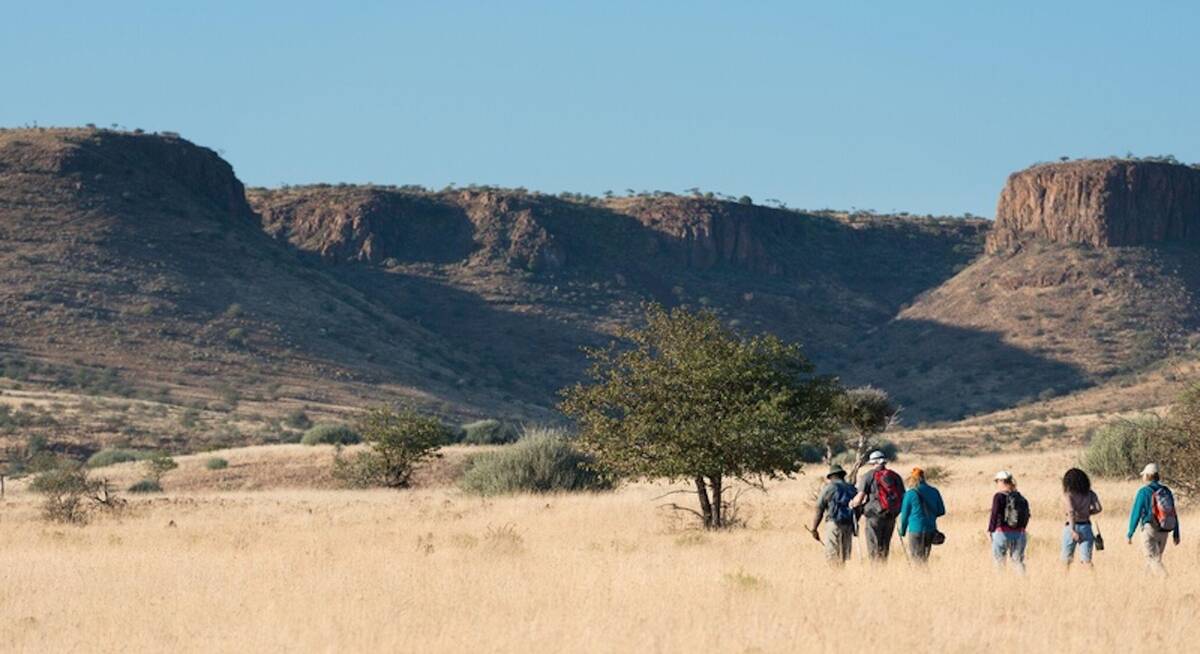
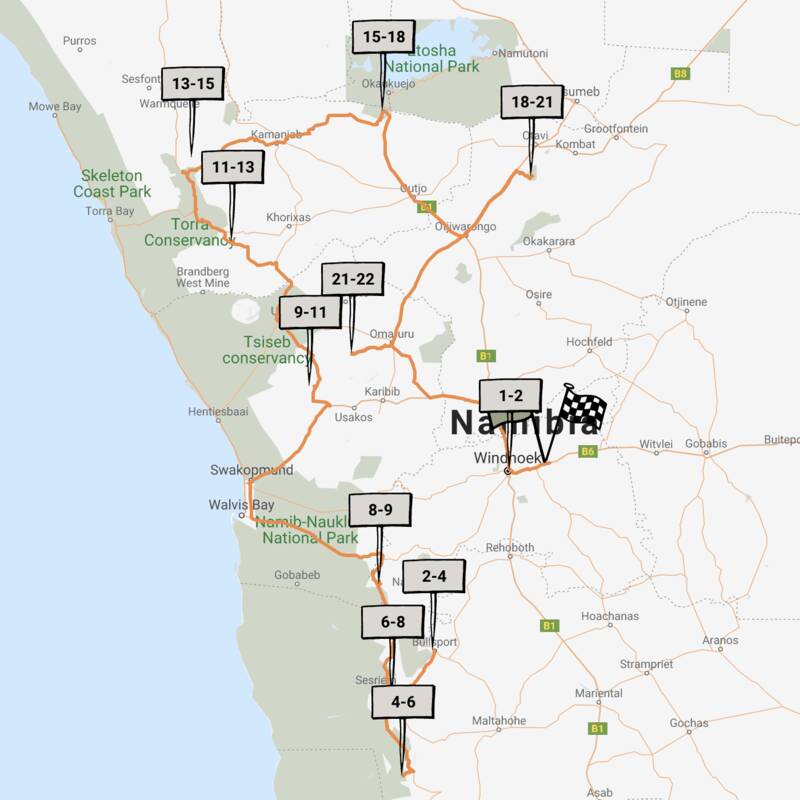
Chongololo Self-drive Safari
21 days • 11 locations • 1 country
WINDHOEK AIRPORT TO WINDHOEK AIRPORT
This self-drive safari focuses on the best walking experiences in Namibia. Get your boots ready for the apricot dunes of the Namib Desert and the ancient hills of Damaraland.
Visiting Central Highlands, Namib-Naukluft and 4 other areas
US$9,020 - US$9,960 per person
Spitzkoppen Lodge: Our full report
Set in its own small reserve, Spitzkoppen Lodge sits beneath the craggy mountain that dominates this remote area.
Widely known as Spitzkoppe Lodge, it opened in November 2016, offering access to a remote and less often visited part of Namibia, between Usakos and Swakopmund, that was previously accessible only to campers or on day trips.
As you approach the lodge, weaving around large, apricot-coloured boulders, the awesome Spitzkoppe Mountains - dubbed the “Matterhorn of Namibia” - grow from silhouettes on the horizon until they loom large above you. It is not hard to understand why this area was chosen as the set for Hollywood blockbusters 10,000 BC and Stanley Kubrick's 2001: A Space Odyssey.
From the meeting area at the centre of the site, which is the setting-off point for activities, a high walkway snakes its way over and around a rocky outcrop to the lodge’s 15 chalets. Strewn across the foot of the mountain, these are a unique cross between a beach hut and a more traditional safari tent. Each is raised up on stilts, with a taut, ribbed khaki-canvas roof that forms an attractive peak in the middle. Inside, they feel light, airy and unfussy. Large windows and white, wooden-clad walls are complemented by light-blue curtains and attractive rustic features. A large headboard divides the room, with twin beds in front and a storage area and bathroom behind. The beds, complete with mosquito nets, face an impressive deck with views through french windows across the plains to the ochre-coloured mountains.
Shaded by the roof of the chalet, the deck has two stylish metal chairs complete with cushions and a drum-shaped table. Two of the chalets are set closer together than the others and are linked by a short walkway to make a family chalet.
During our visit in May 2019, we tended to walk to and from the main area during the day, but after dark – and at other times if preferred – guests are usually transported on one of the camp’s golf buggies. These are supposed to run every half hour, although it is generally better to organise a time to be picked up or dropped off. It is also worth noting that passing places for the buggy along the walkway aren’t all that frequent, so those on foot should keep an eye and ear out.
Spitzkoppen Lodge’s main area is reached along another walkway that weaves its way up from the meeting area, around and over the smooth sandstone whalebacks. You’ll pass the reception and managers' office and a small curio shop, but the capacious hub of the lodge is at the top level. Here, beneath a billowing canvas roof, are the lounge, restaurant and bar. It’s a light, airy, multi-level space, dominated by individual dining tables, yet with armchairs, sofas and a range of books tucked away in comfy alcoves, and a semi-circular bar whose glass walls make the most of the views.
In one corner, a door leads to the ingeniously designed pool area. A shallow depression in the sandstone, carved out by millions of years of erosion, has been slightly deepened to form a stunning setting for a refreshing dip, facing west and overlooking the plains below.
Activities at Spitzkoppen Lodge focus on exploring the geological features around the mountain range, by vehicle and/or on foot, and the San rock art that is hidden away under overhangs and in caves. However, with limited guides at the lodge, and only one vehicle, we would be concerned that individually tailored activities may not always be possible.
Although driving without a guide is not permitted, you can take one of the self-guided walking trails, for which maps are provided. Either way, vertigo sufferers and the less sure of foot should be aware that some of the walking trails are very steep.
After breakfast we headed out through the reserve by 4WD with one of the lodge's guides towards the collection of rock paintings known as Little Bushman's Paradise, which sits under a protected overhang surrounded by a natural rock amphitheatre. The last section of the trip was a walk up a very steep rocky face with a chain handrail for support. The area is reminiscent of something out of Arthur Conan Doyle’s novel The Lost World and you can certainly see why the nomadic San peoples would have sought refuge here. Sadly, although the location is impressive, the rock art itself has been defaced over the years, and what were once spectacular artworks have been reduced to shadows of their former vibrancy. Among the area’s better preserved rock-art sites is Bushman’s Paradise, which is close to one of Spitzkoppe’s picturesque rock arches.
En route back to the lodge we embarked on a peculiar detour to a tree with a carcass tied up in one of the branches. We understand that this is a ploy to entice the local leopard down from the rocky outcrops for guests to see. This sort of baiting isn’t something we encourage or enjoy and while a leopard sighting is a bonus we do not condone this kind of artificial feeding as it disrupts the animal’s natural behaviour. Luckily for us the leopard was nowhere to be seen, but some guests may wish to ensure they avoid this segment of the trip.
Geographics
- Location
- Damaraland, Namibia
- Ideal length of stay
- 2 nights
- Directions
- Around 4½ hours' drive from Windhoek or around 3 hours from Swakopmund.
- Accessible by
- Self-drive
Food & drink
- Usual board basis
- Half Board
- Food quality
- On our last visit, in May 2019, our meals at Spitzkoppen Lodge were part wholesome and hearty and part imaginative and well presented, particularly the starters. We also found that at times the service lacked a degree of finesse.
In particular, we felt that the self-service buffet was over utilised for such a small lodge, especially as it was less than half full on our visit, and we felt that the food suffered a little as a result.
Breakfast was a buffet of cold meats, cheeses and fruit with bread and cereal brought to the table. Perhaps unusually there were also self-service hot dishes, which if you aren’t up early can result in some rather sad- looking eggs. On the plus side, freshly cooked omelettes, bacon, sausage and eggs can also be prepared to order.
We haven’t had a chance to have lunch here, but we understand that there is a light lunch menu. The lodge can also provide you with a packed lunch if requested the night before.
For our three-course dinner, an imaginatively presented starter of beetroot and game carpaccio was served to the table. This was followed by a self-service buffet of potatoes, rice, sautéed beans and carrots, beetroot, Chicken roulade with a cheese sauce and vegetarian pasta. The meal was finished with a chocolate tart. - Dining style
- Individual Tables
- Dining locations
- Indoor Dining
- Further dining info, including room service
- Room service is not available.
- Drinks included
- Drinks are not included. The water has been purified and is considered safe to drink.
Special interests
- Walking
- Namibia’s Spitzkoppe Massif has long been a fantastic destination to explore on foot. The picturesque mountains, which hide ancient Bushman art, are often accessed via steep paths which, with the opening of Spitzkoppen Lodge, are now much easier to explore
- See ideas for Walking in Namibia
Children
- Attitude towards children
- Spitzkoppen Lodge welcomes children 6 years and older.
- Property’s age restrictions
- No children under 6 years.
- Special activities & services
- None
- Equipment
- There is a family chalet that would suit older children.
- Generally recommended for children
- For safety reasons we feel that the lodge is not suitable for children under six years old.
- Notes
- As the pool is unfenced and there are raised walkways around the camp, children should always be supervised by their parents.
Our travellers’ wildlife sightings from Spitzkoppen Lodge
Since mid-2018, many of our travellers who stayed at Spitzkoppen Lodge have kindly recorded their wildlife sightings and shared them with us. The results are below. Click an animal to see more, and here to see more on our methodology.

100% success

14% success

5% success

5% success

5% success

0% success

0% success

0% success

0% success

0% success
Communications
- Power supply notes
- There is a back-up generator in case of a power failure. The chalets have three-round-pin plug points for charging equipment, but travellers will need to bring their own adapters.
- Communications
- There is WiFi in the main area.
- TV & radio
- None
- Water supply
- Borehole
- Water supply notes
- The water is solar heated.
Health & safety
- Malarial protection recommended
- Yes
- Medical care
- The nearest hospital is in Usakos. Guests could be flown to Windhoek or Swakopmund in case of emergency.
- Dangerous animals
- Moderate Risk
- Security measures
- The reserve is surrounded by a fence with a gate, and a guard is on duty all night.
- Fire safety
- There are fire extinguishers in the chalets and in and around the main area.
Activities
4WD Safari
Birdwatching
Cultural excursion
Guided walking safari
Private activities
Self-guided walking
Extras
- Disabled access
- On Request
- Laundry facilities
- A laundry service is available at extra cost.
- Money
- There are no safes in the chalets and the lodge does not offer a currency exchange.
- Accepted payment on location
- Spitzkoppen Lodge accepts Visa and Mastercard. Cash payments may be made in Namibian dollars and South African rand.
Plan and book your trip with Expert Africa
All of our trips are tailor-made, so we'll always adapt them to suit you. Talk to an Expert and let us plan and arrange your perfect trip.

Talk to an Expert
Call or email us now! We’ll match you with the Specialist in our team who is best suited to help you. Then together we can start planning your trip.

Set up your itinerary
Based on our experience and your ideas, your specialist will create a detailed, costed itinerary. We’ll refine it together, until we have a trip that you’re perfectly happy with.

Prepare for your trip
The same Specialist will make the seamless arrangements for your trip, send you detailed travel documents, and be available to answer any questions before you depart.

Travel with peace of mind
After you set off, you’ll be cared for by our partners in Africa, most of whom have worked with Expert Africa for decades. And if you ever need us urgently, we’re available 24/7.

When you return
We love to learn about your trip, and so will always be grateful if you’ve the time to give feedback to your Specialist when you return.
Spitzkoppen Lodge's location
Look closer at the environment and surroundings of Spitzkoppen Lodge.
Other lodges in Damaraland
Alternative places to stay in this same area.
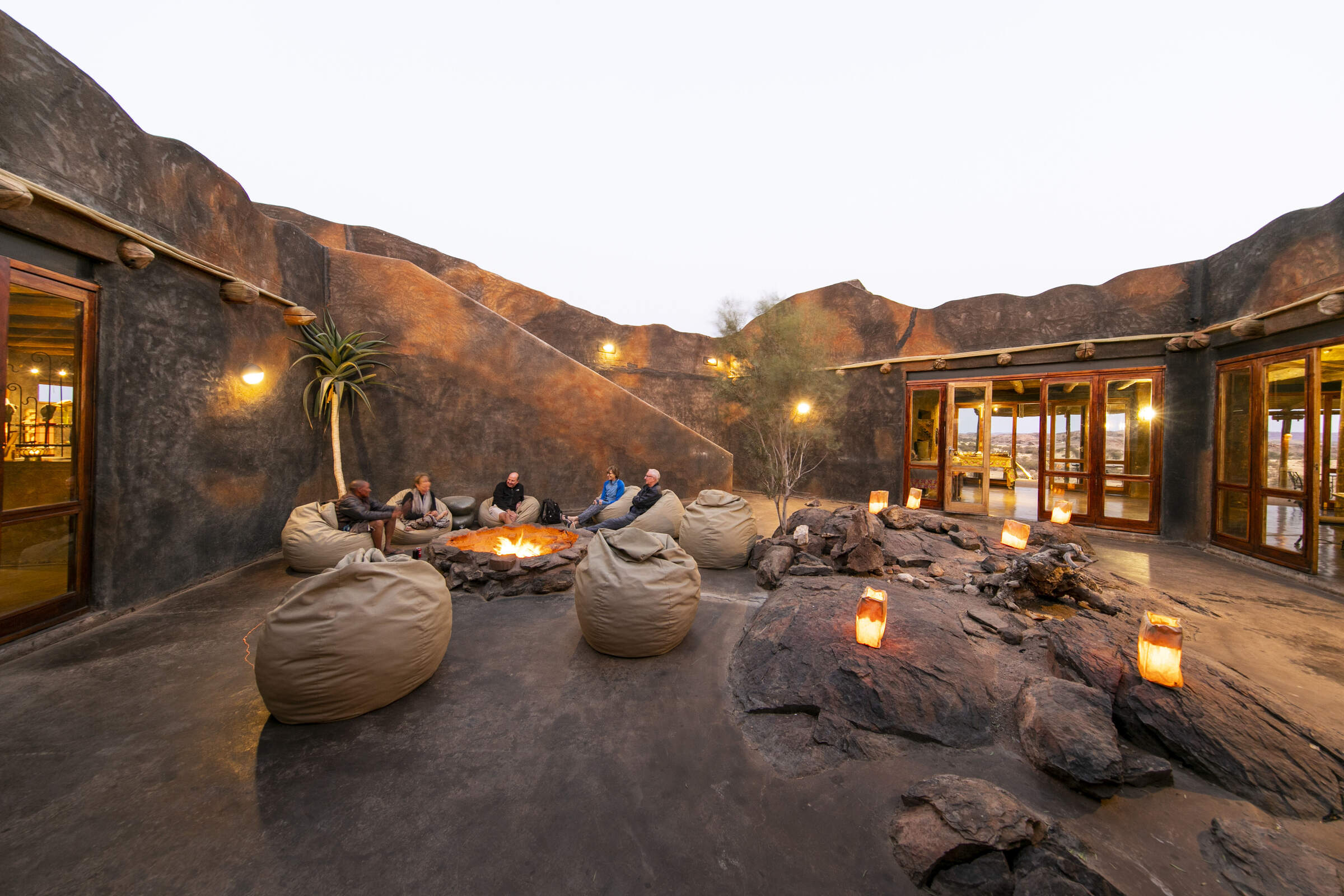
Doro Nawas
Comfortable rooms and a convenient location make the community run Doro Nawas a great base for exploring Damaraland.
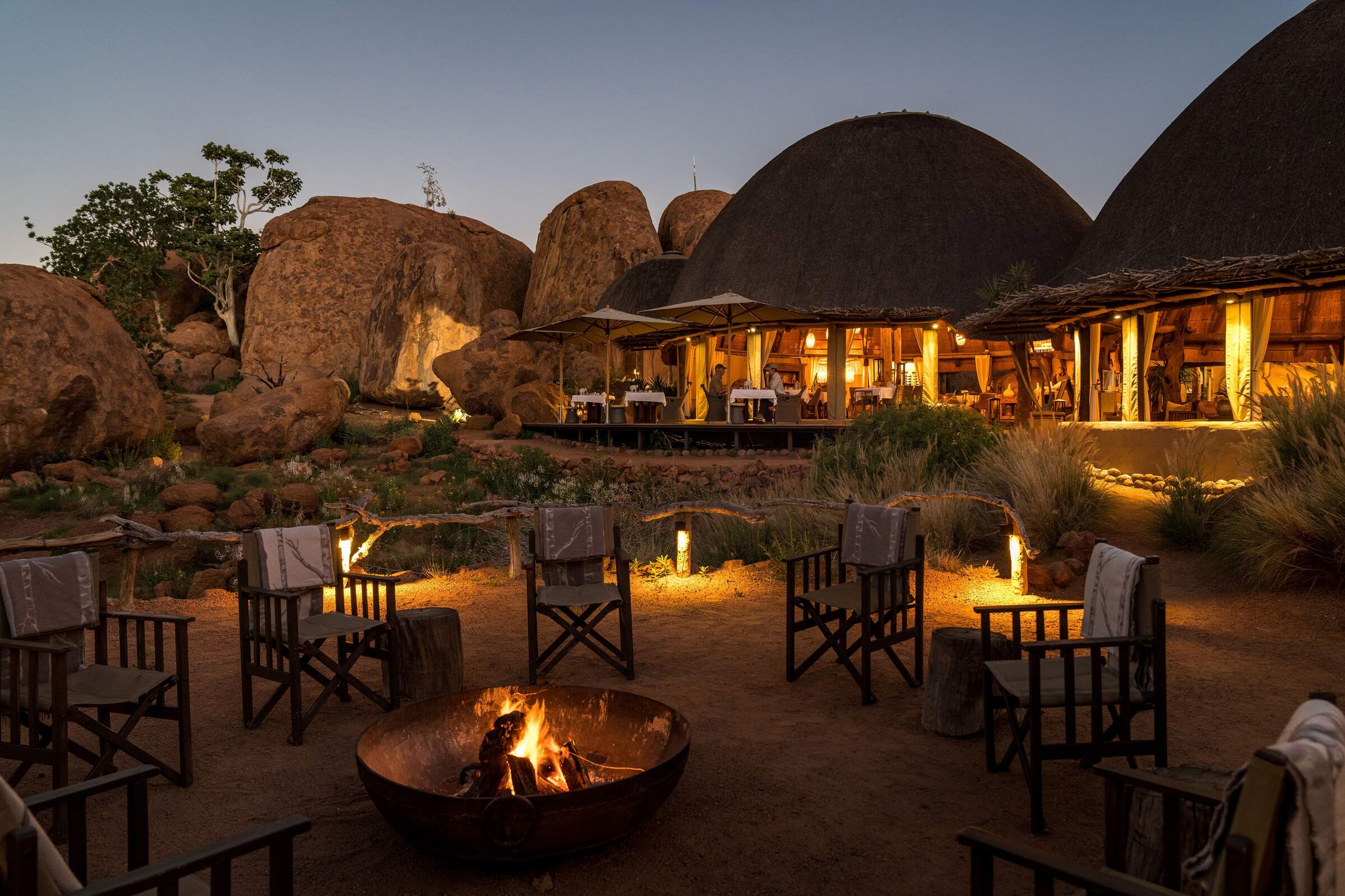
Mowani Mountain Camp
Mowani is a beautiful and stylish mountain retreat in southern Damaraland; it makes a great base for visits toTwyfelfontein.
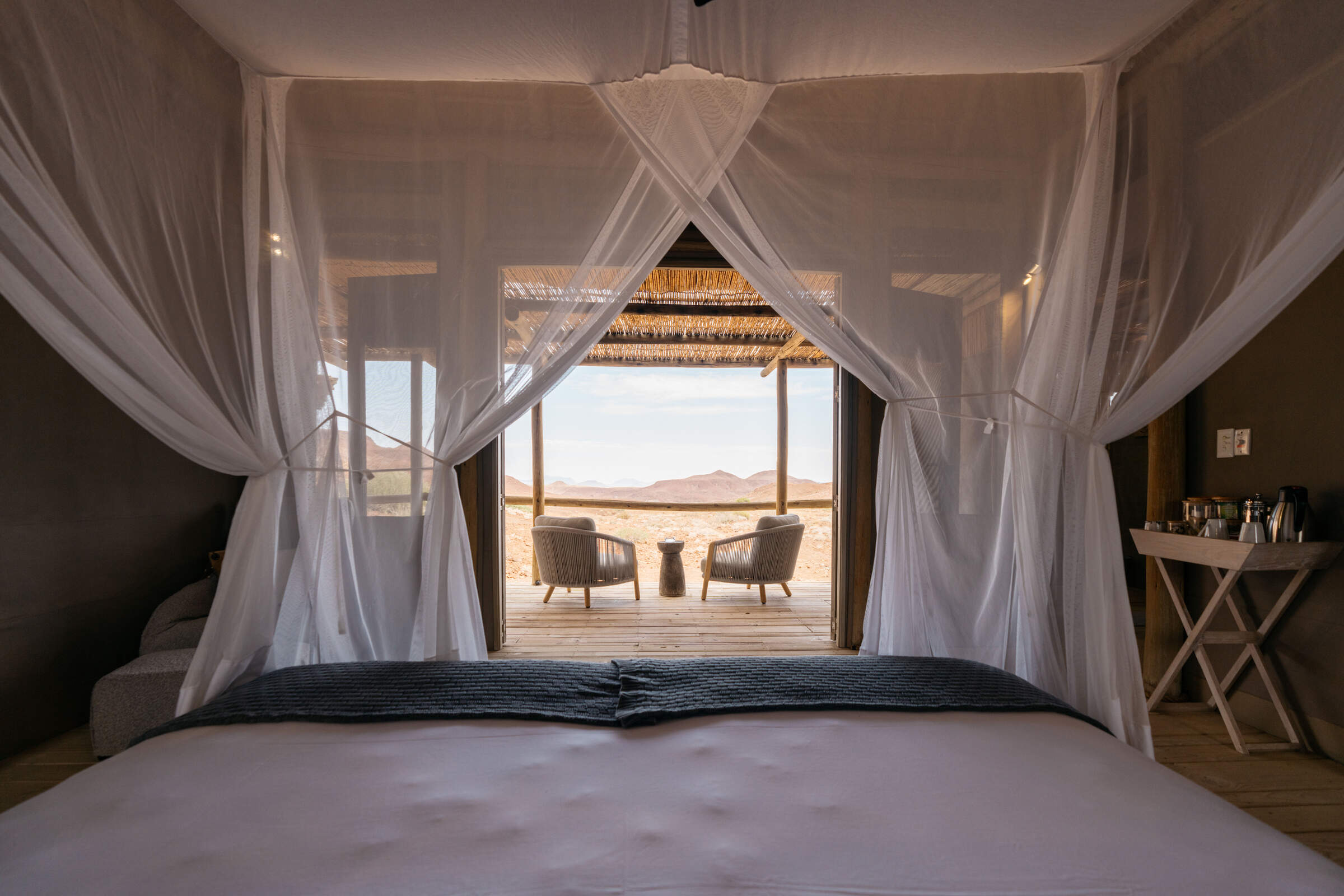
Damaraland Camp
Setting the standard for community partnerships, Damaraland Camp offers a beautiful location, a range of activities – and a genuine welcome.
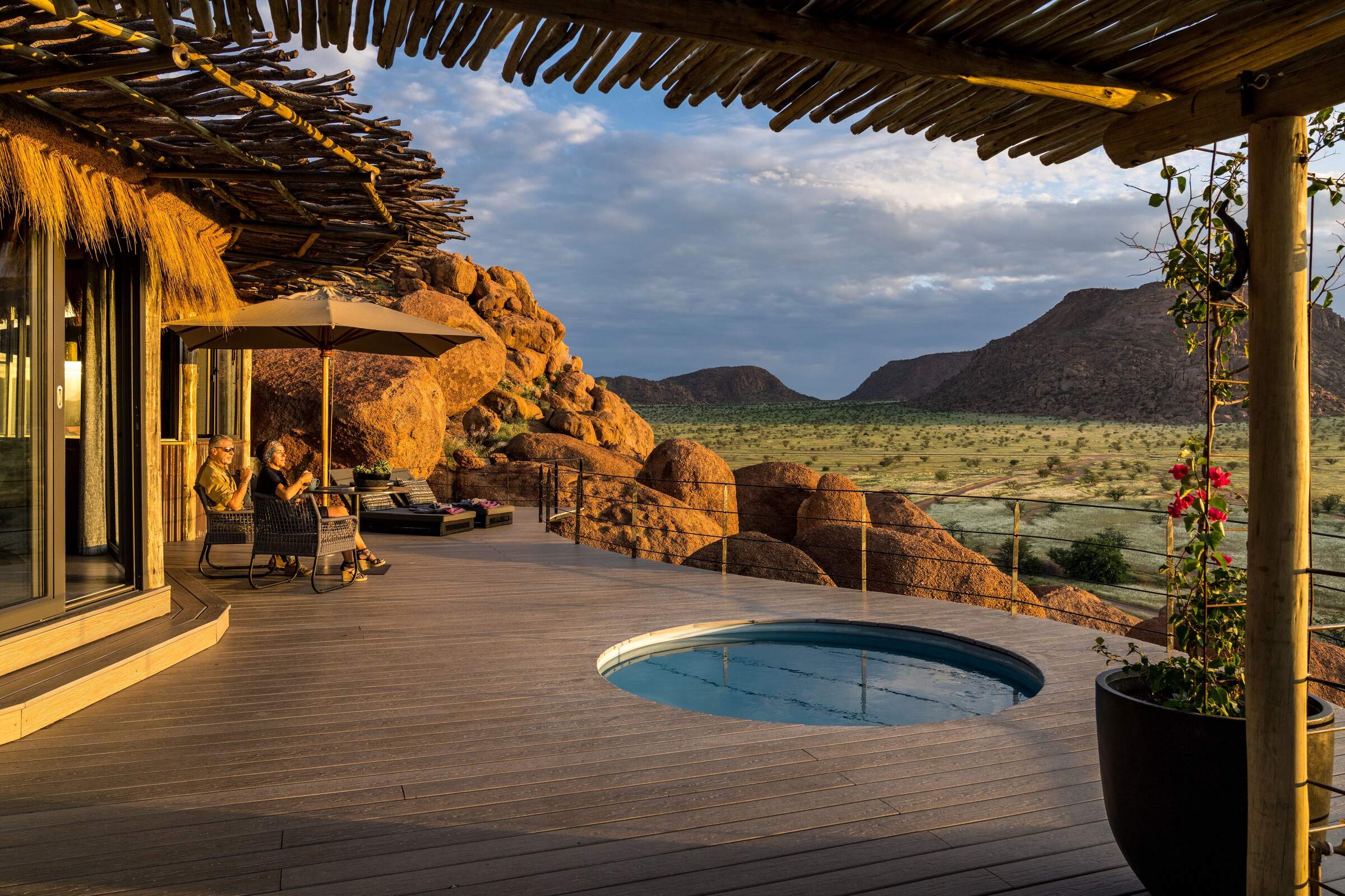
Camp Kipwe
With unusual, igloo-like rooms, open-air bathrooms and beautiful scenery, Camp Kipwe is well placed for nature and cultural excursions.
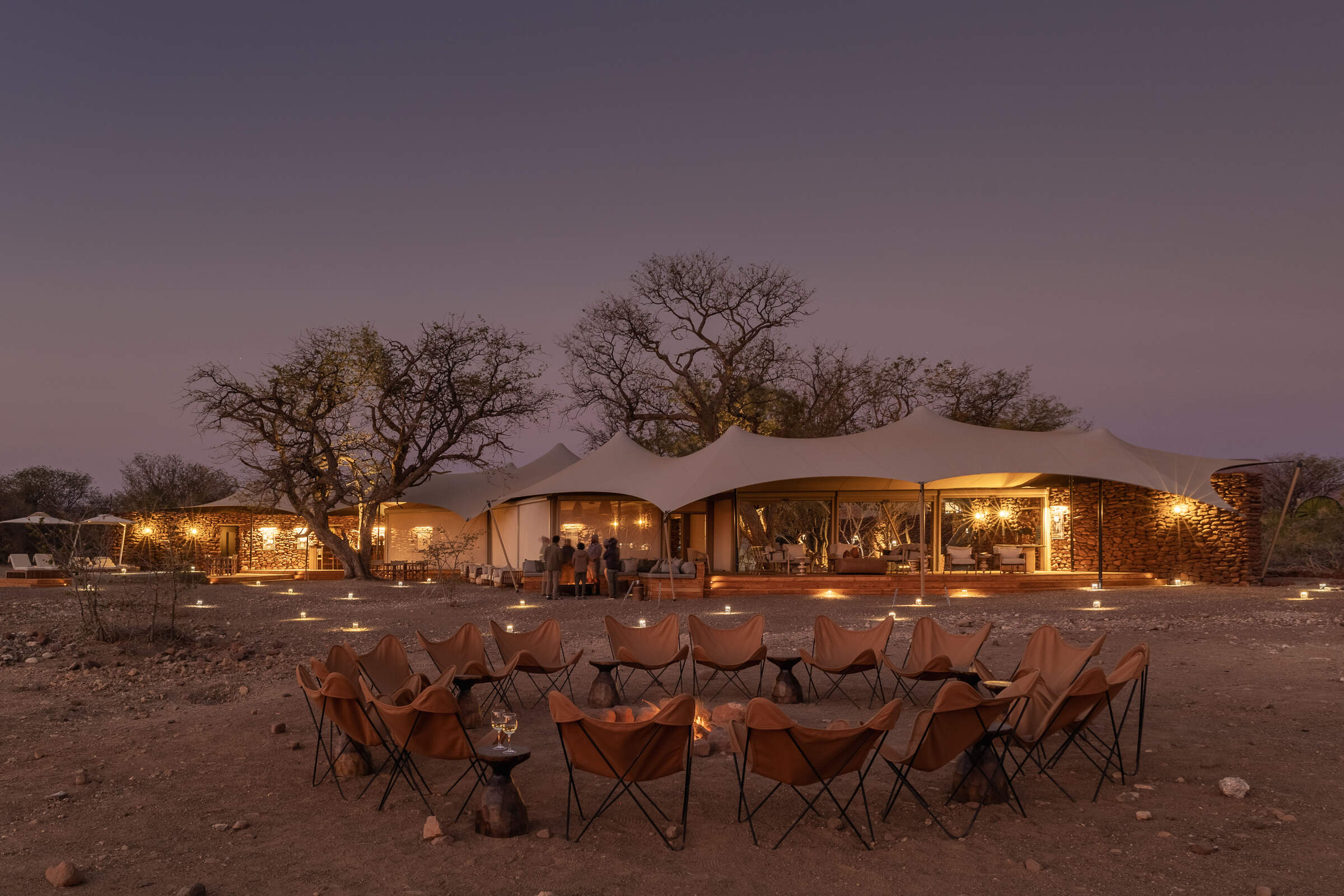
Desert Rhino Camp
Desert Rhino Camp offers a rare opportunity to track black rhino on foot in one of the last true wilderness areas – an amazing experience.
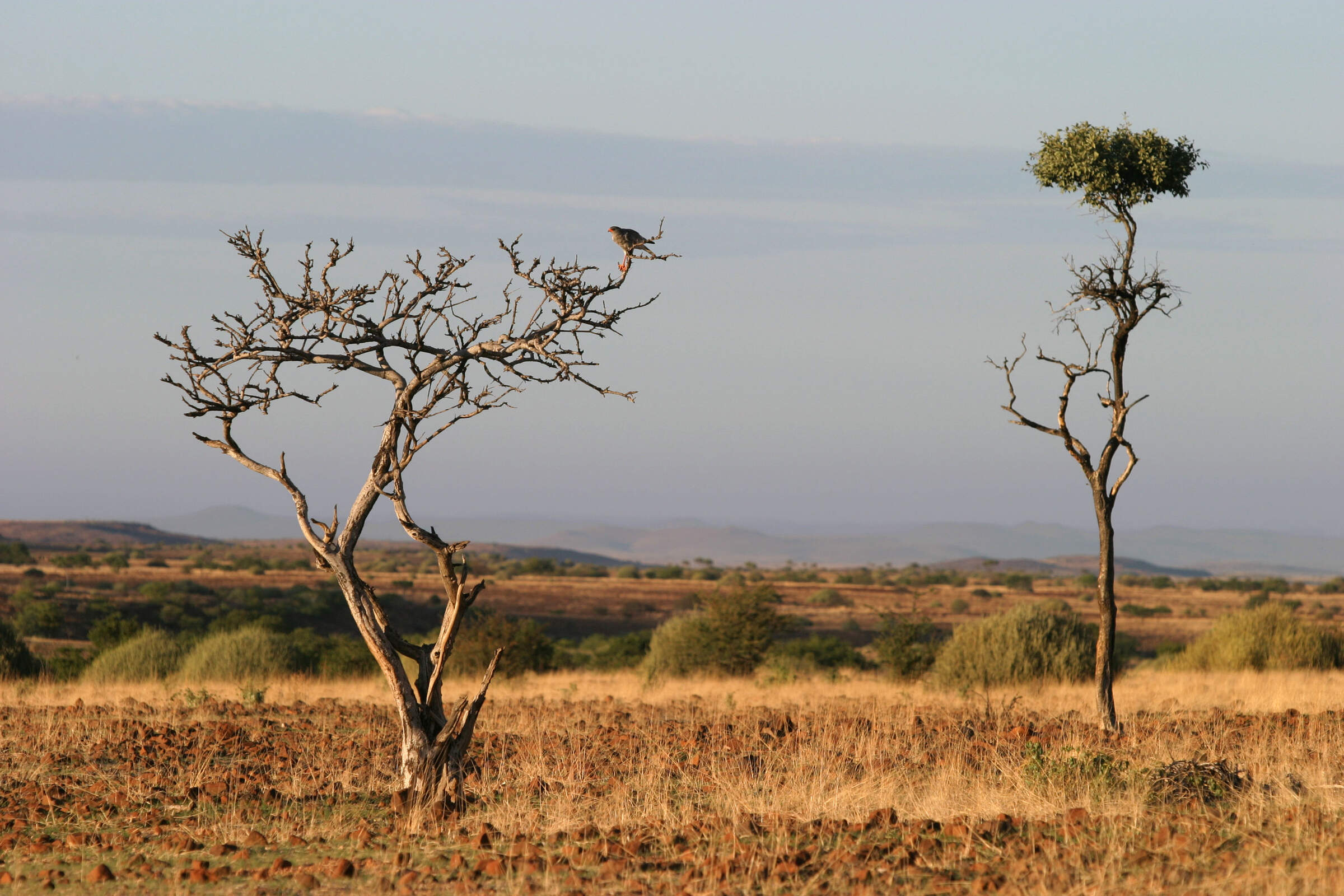
Etendeka Camp
Etendeka is an owner-run camp in the remote and less visited north of Damaraland. The camp is renowned for it's spectacular guided walking trails.
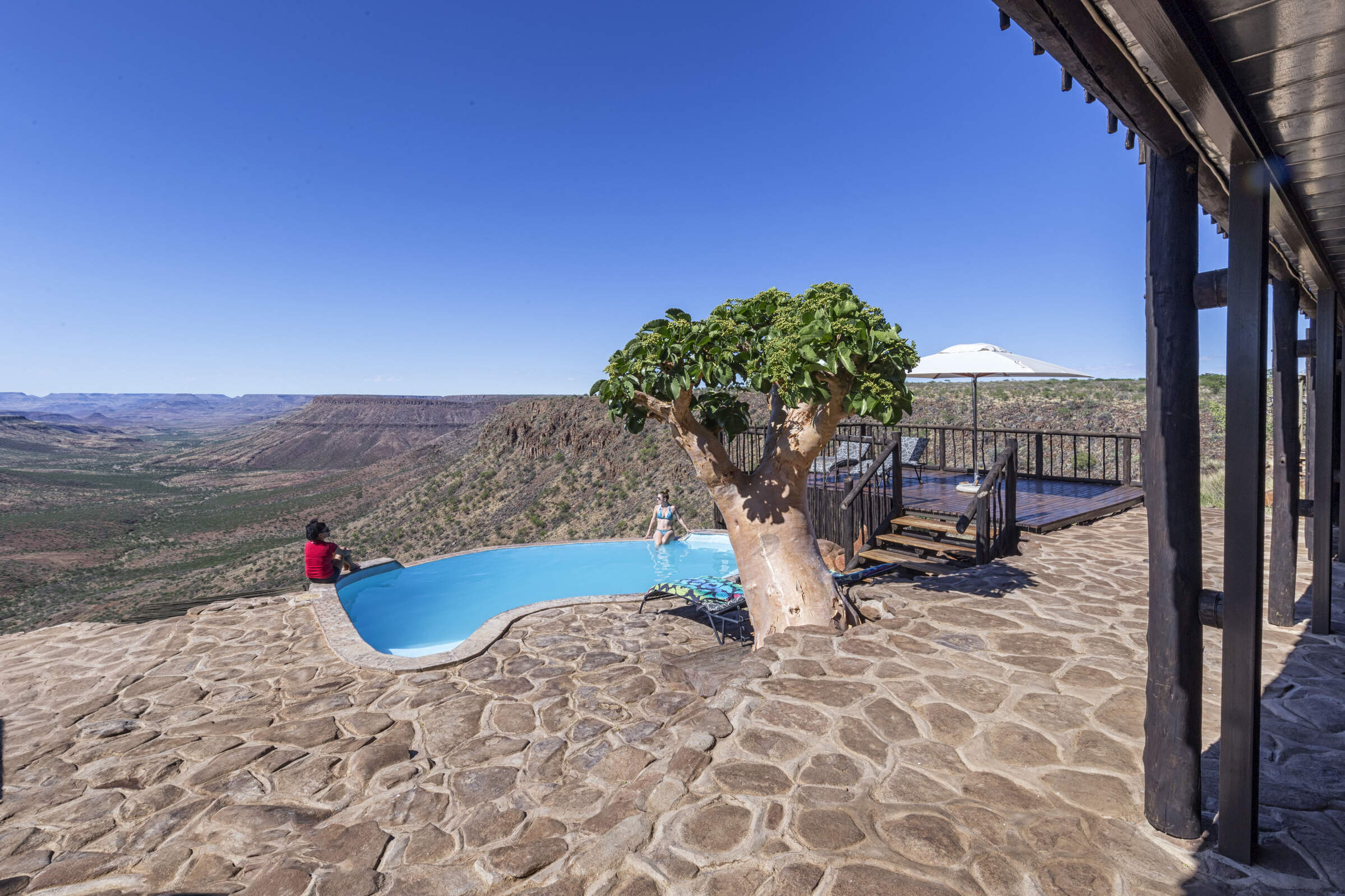
Grootberg Lodge
On the edge of an ancient plateau Grootberg Lodge has a stunning location and arguably the best views of any lodge in Namibia.
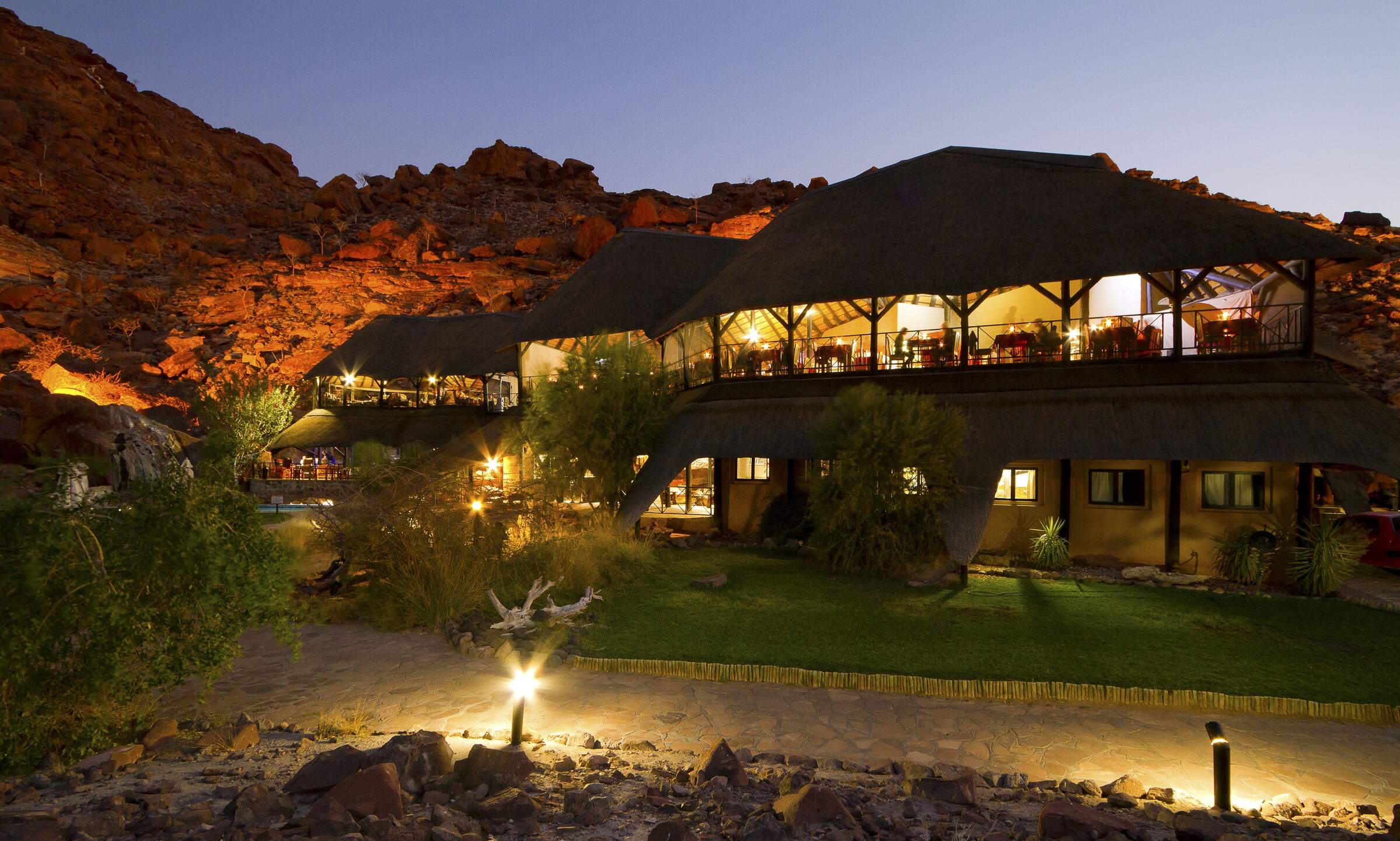
Twyfelfontein C'try Lod.
A large lodge set among the rocks, Twyfelfontein Country Lodge is a convenient base for visiting the rock engravings, which are only 4km away.
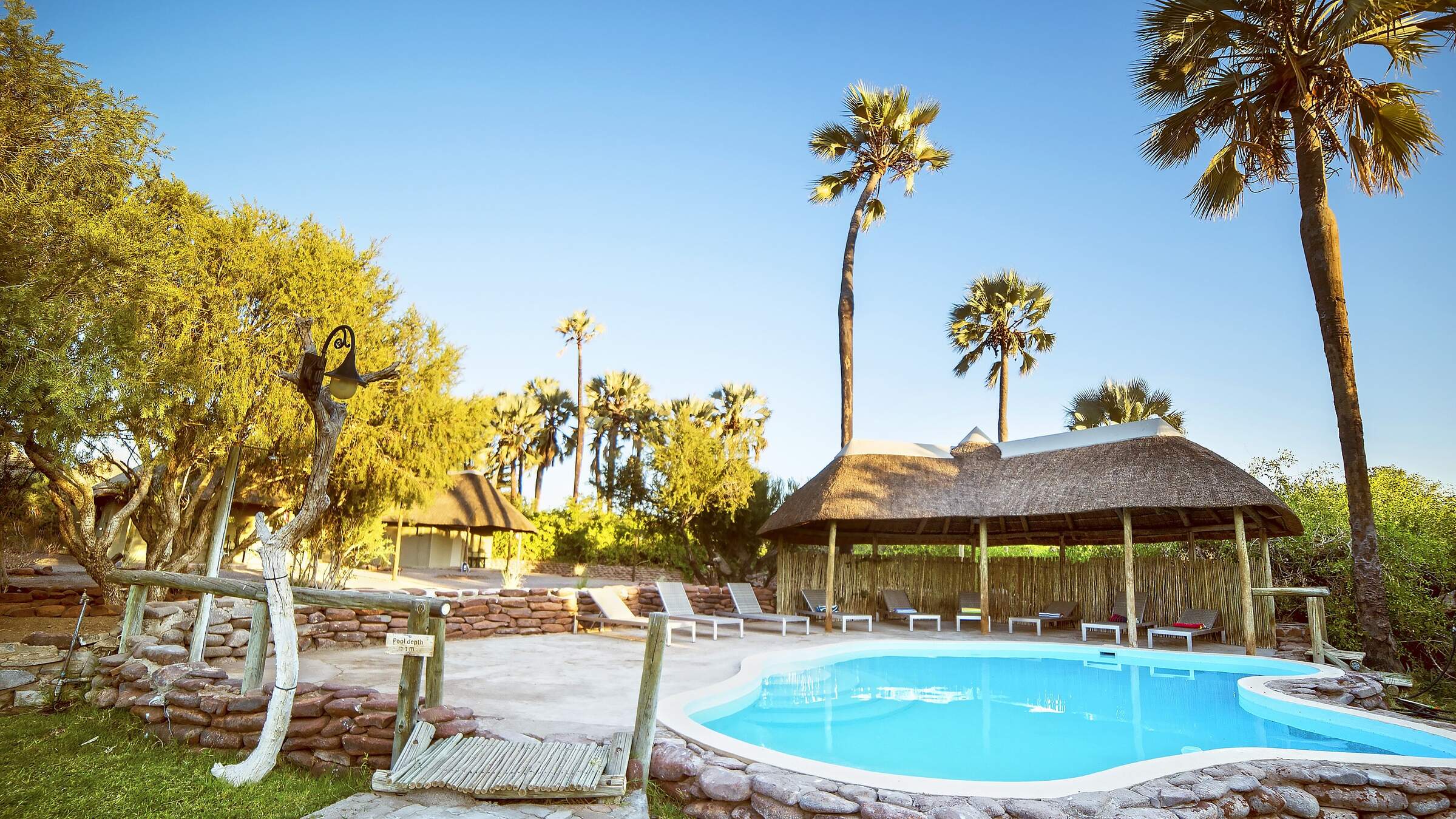
Palmwag Lodge
Palmwag Lodge has a great location by a spring in the Uniab River and offers access to an area where you can see a variety of desert-dwelling animals.
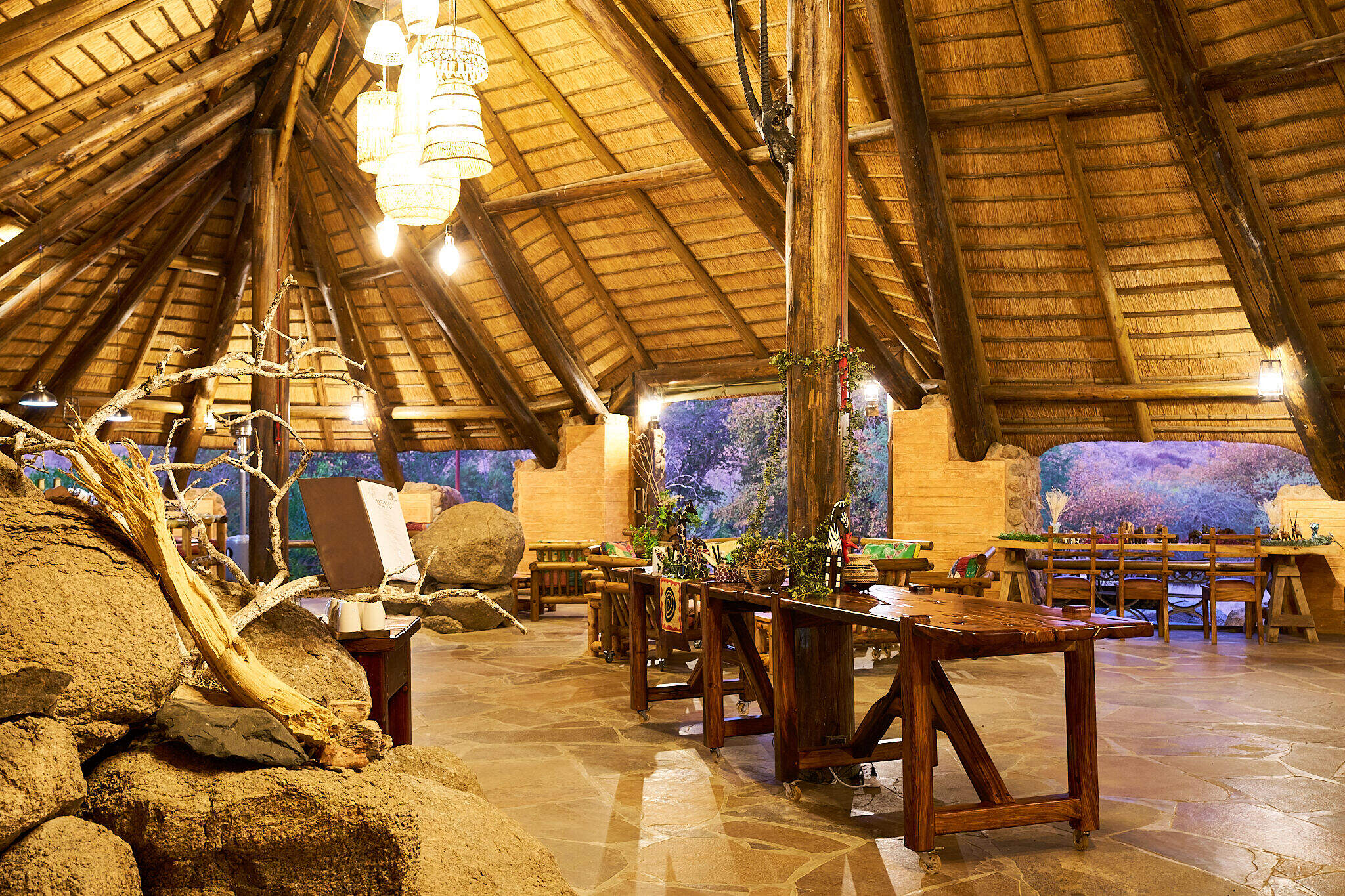
Huab Lodge
Huab is a classic little Namibian Lodge which is slightly off the beaten track in a lesser visited part of Damaraland.
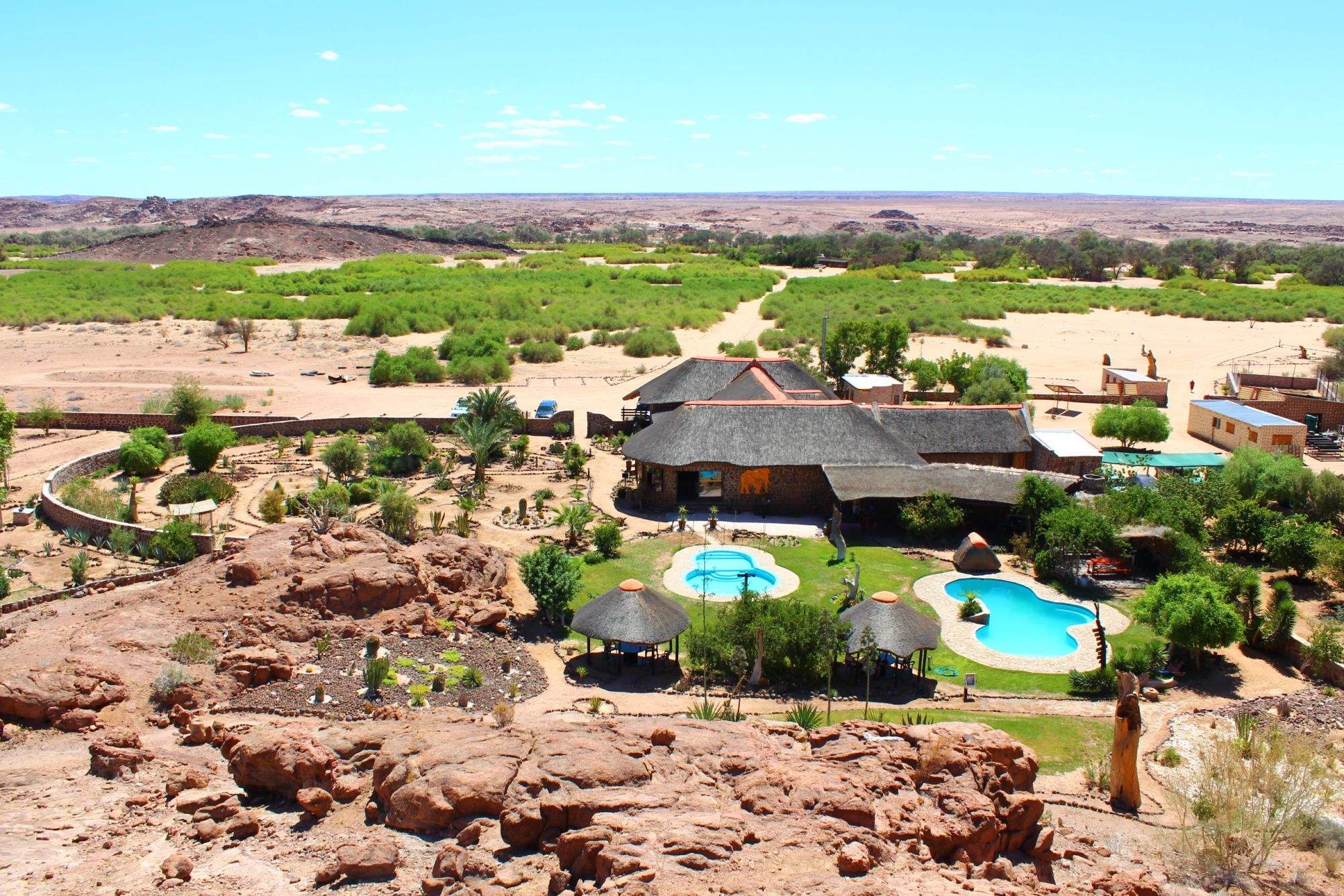
Brandberg White Lady
Brandberg White Lady Lodge, nestled at the foot of its namesake, makes a good base from which to visit bushman rock paintings including the 'White Lady'.
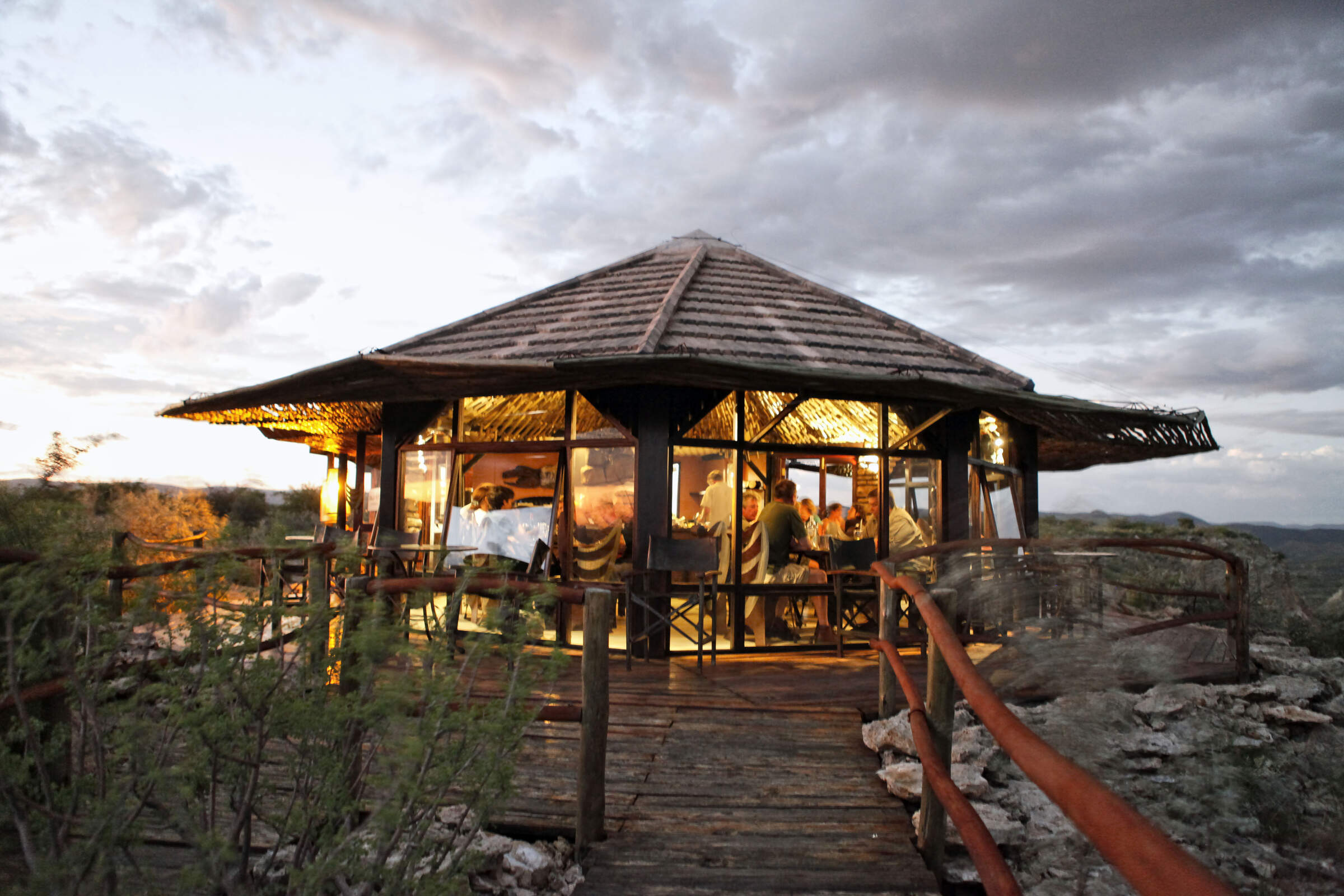
Vingerklip Lodge
Vingerklip Lodge occupies a lovely location, but is a little too far east for guests to visit Damaraland's main attractions.
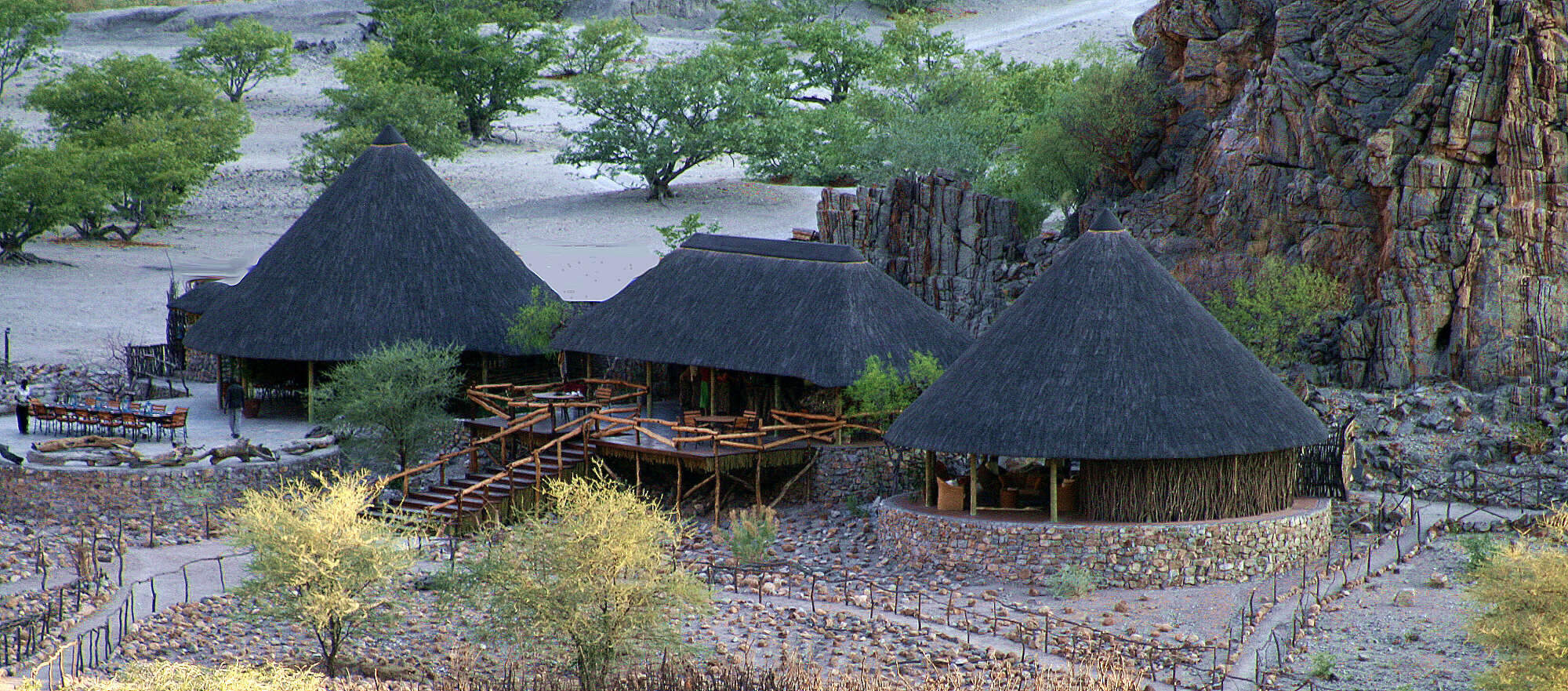
Khowarib Lodge
Khowarib Lodge has a great location overlooking the Hoanib River. This is one of the few places to offer authentic Himba village visits.
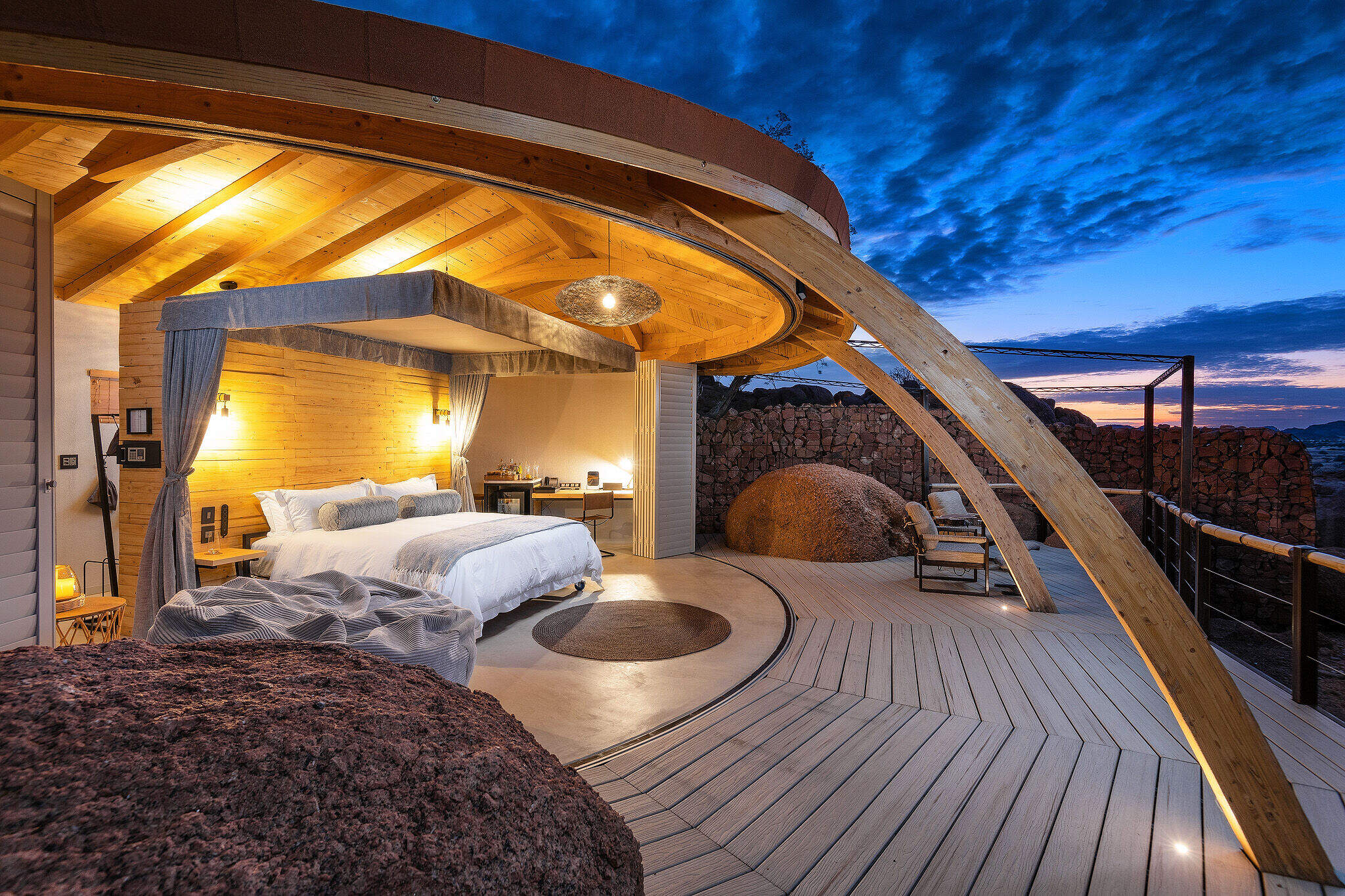
Onduli Ridge
Onduli Ridge is a luxurious, low-impact luxury camp offering top-notch guiding in a remote wilderness area of Damaraland.
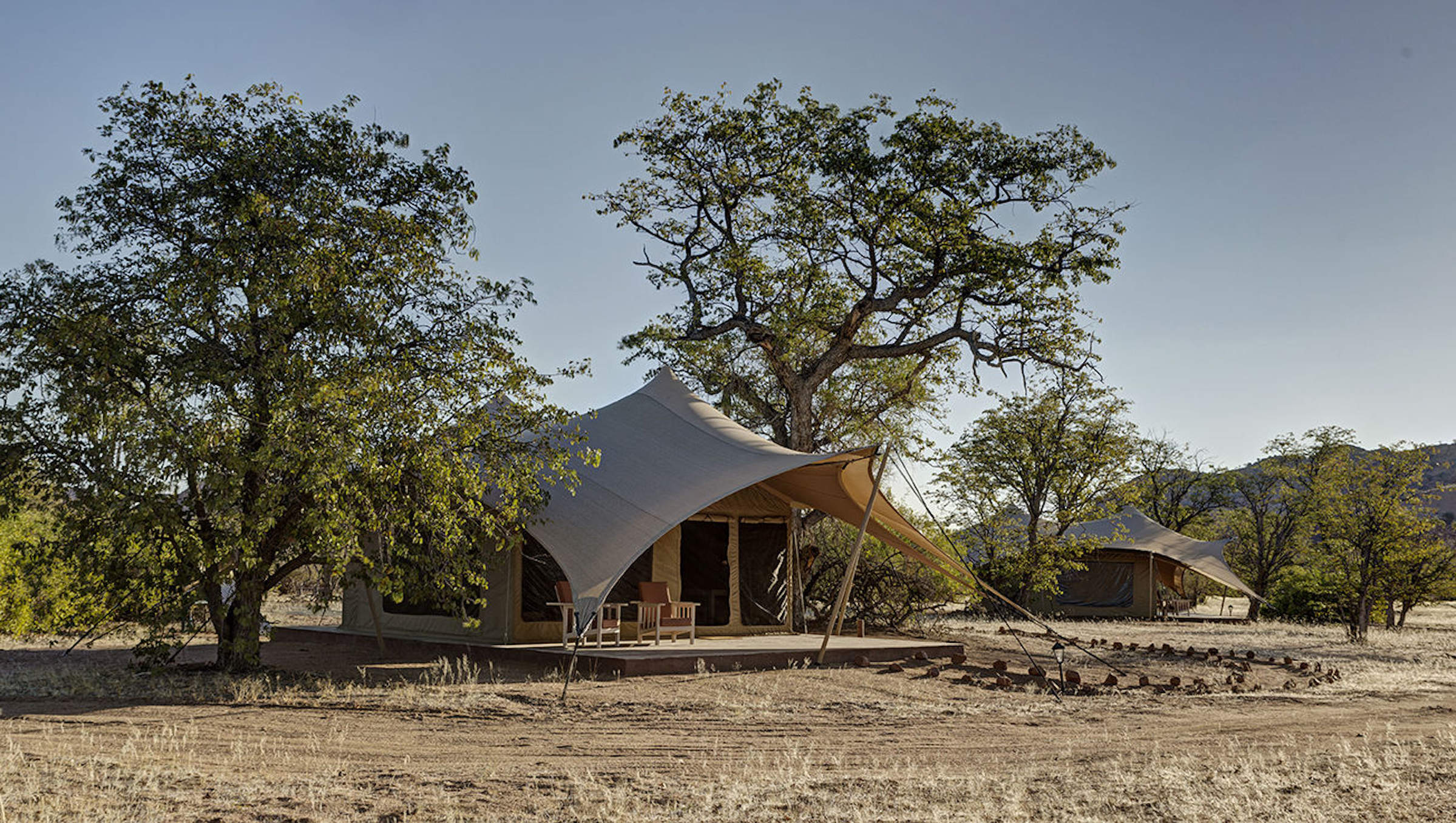
Malansrus Camp
Within easy reach of Twyfelfontein, Malansrus offers a simple but comfortable base for visits to the rock engravings or seek out desert-adapted elephants.
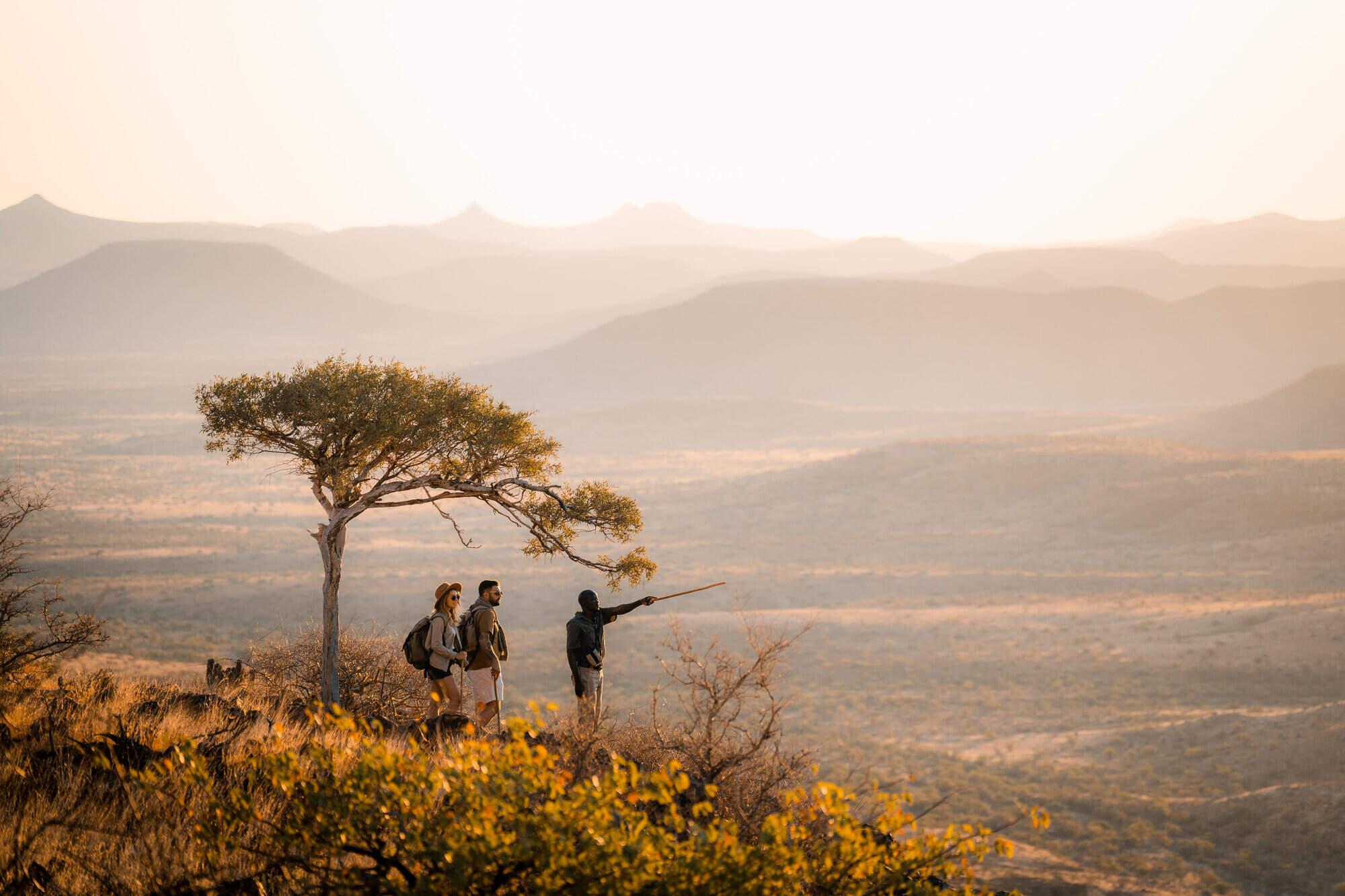
Etendeka Walking Trail
The Etendeka Walking Trail promises to offer a back-to-basics walking and camping experience in one of Namibia's most remote and untouched wilderness areas.
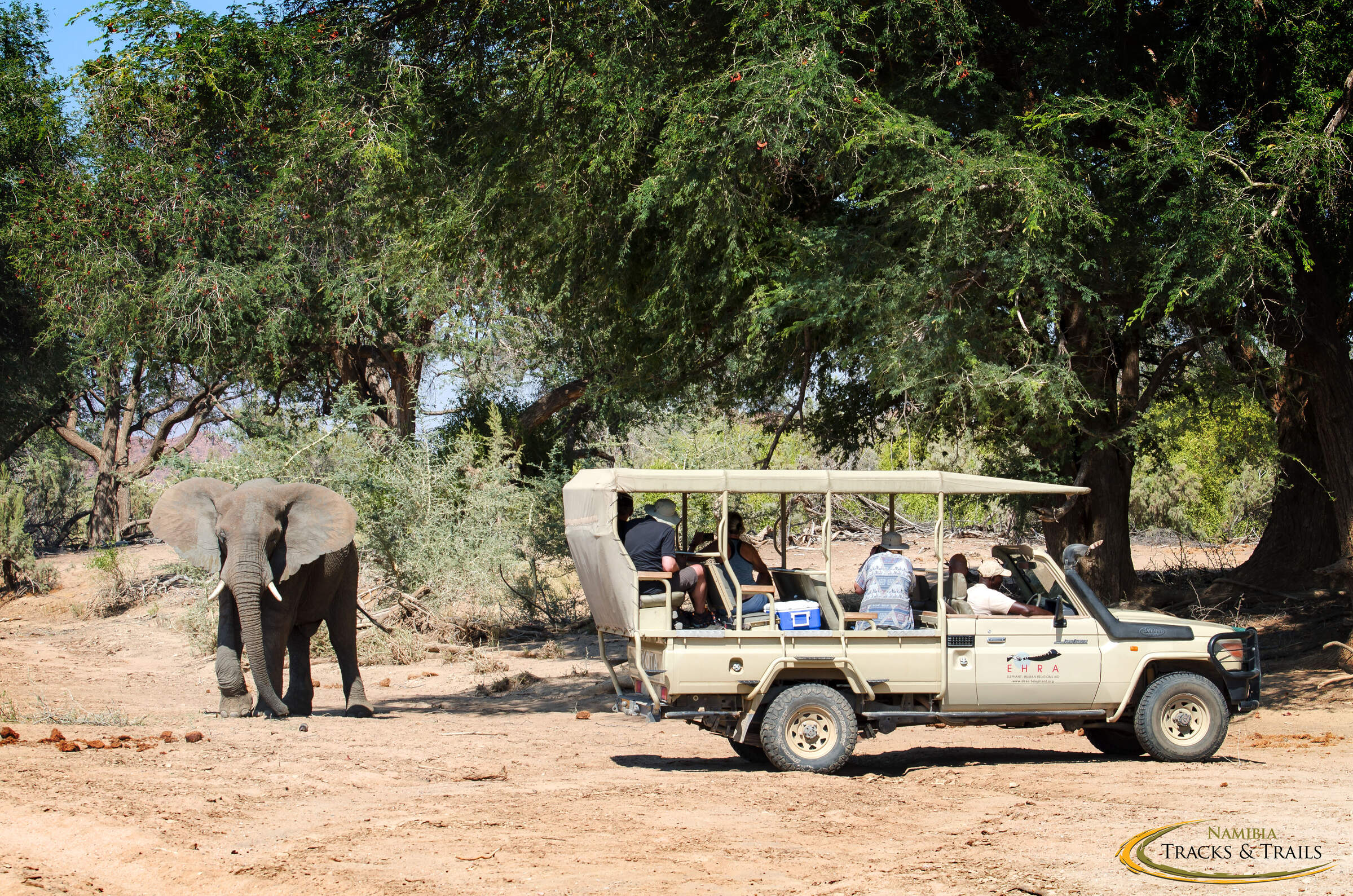
Ozondjou Trails
The simple Ozondjou Trails gives a unique perspective on living with Damaraland’s desert-adapted elephants and how tourism is key to protecting them and the livelihood of the people.
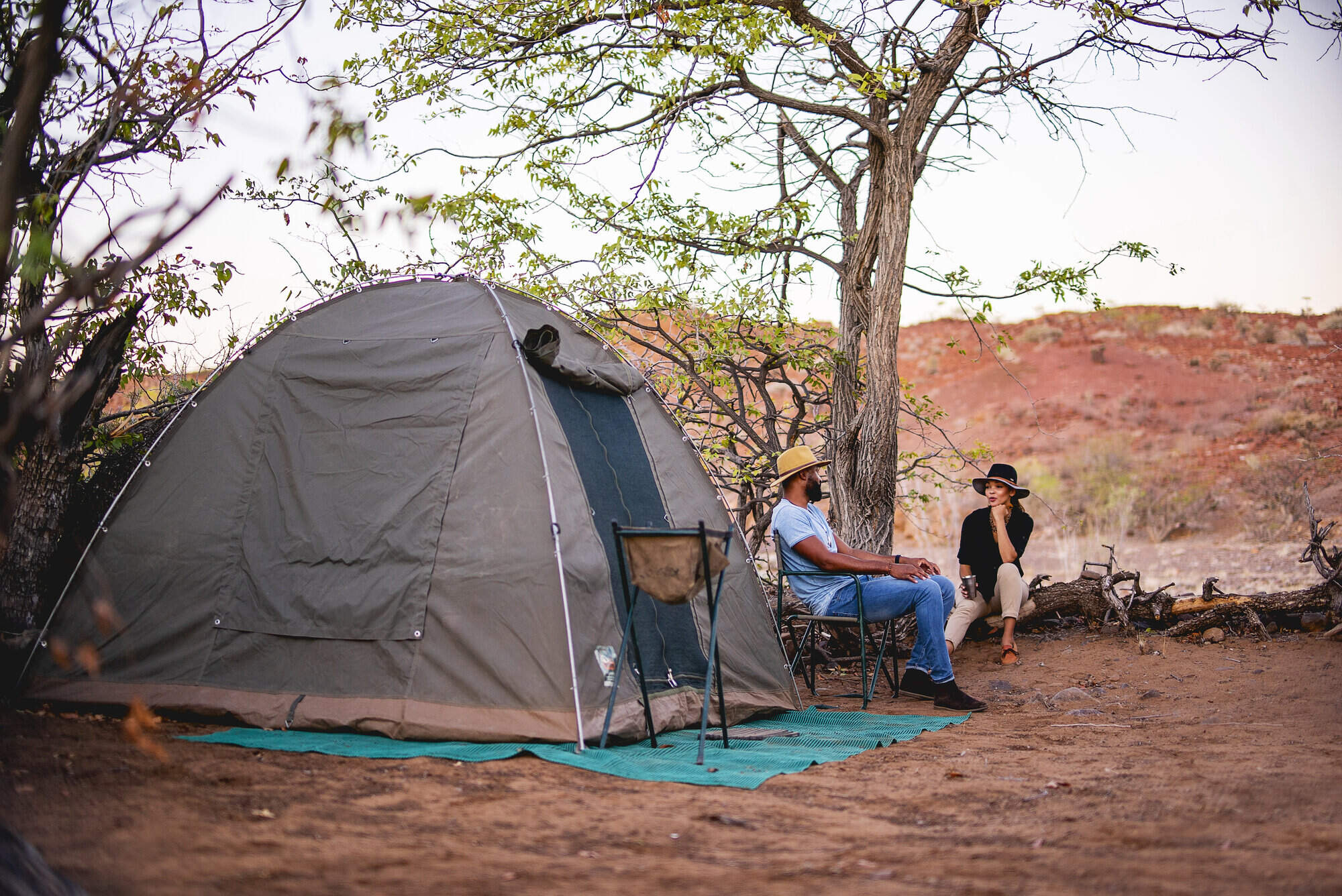
Palmwag Sleep-out
Palmwag Sleep-out is a simple camping experience and a great way to enjoy the remote beauty of the vast Palmwag Concession
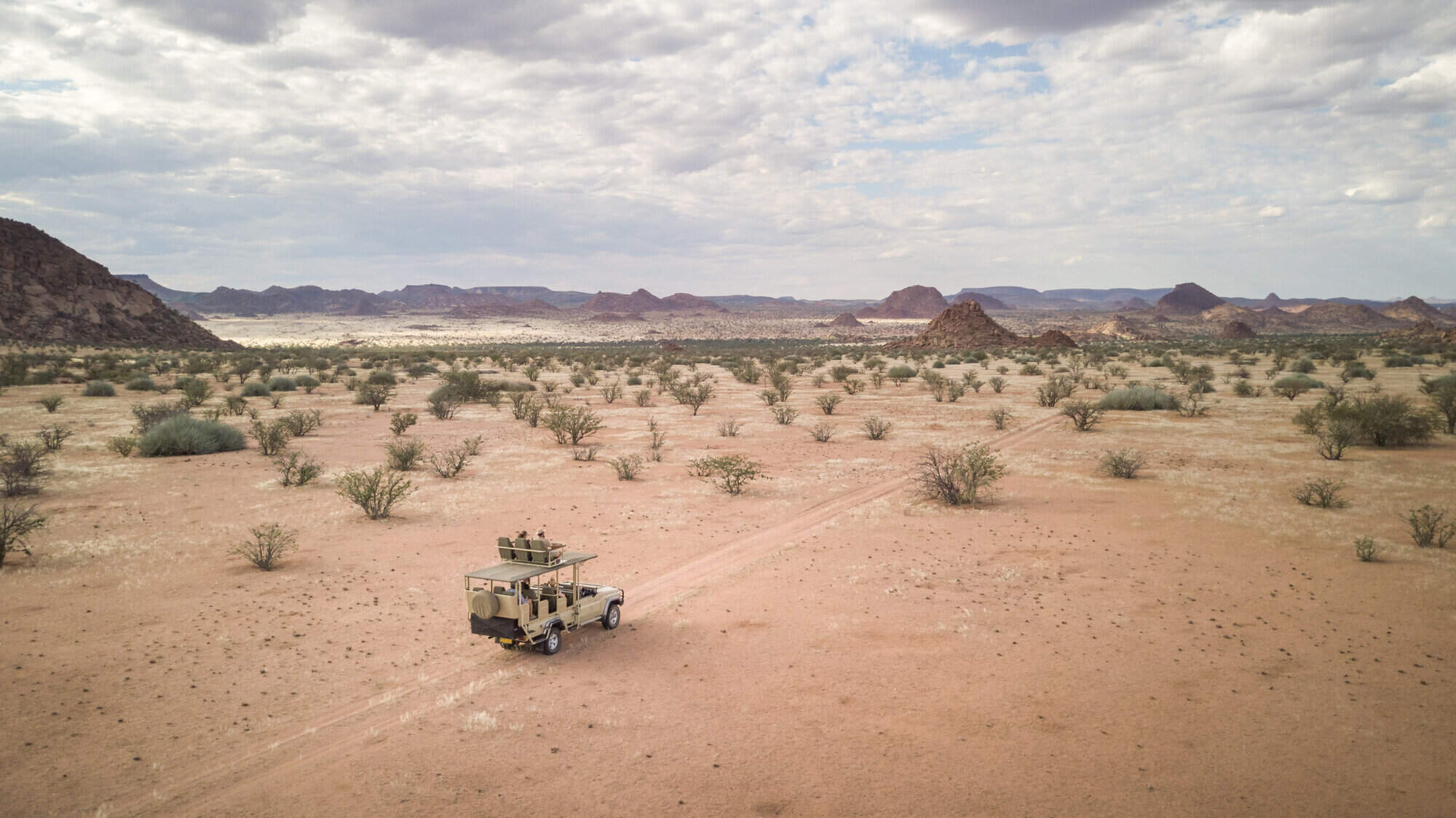
Camp Doros
Small, intimate and with excellent eco-credentials, Camp Doros is set above an ephemeral river within a remote community concession of Damaraland.
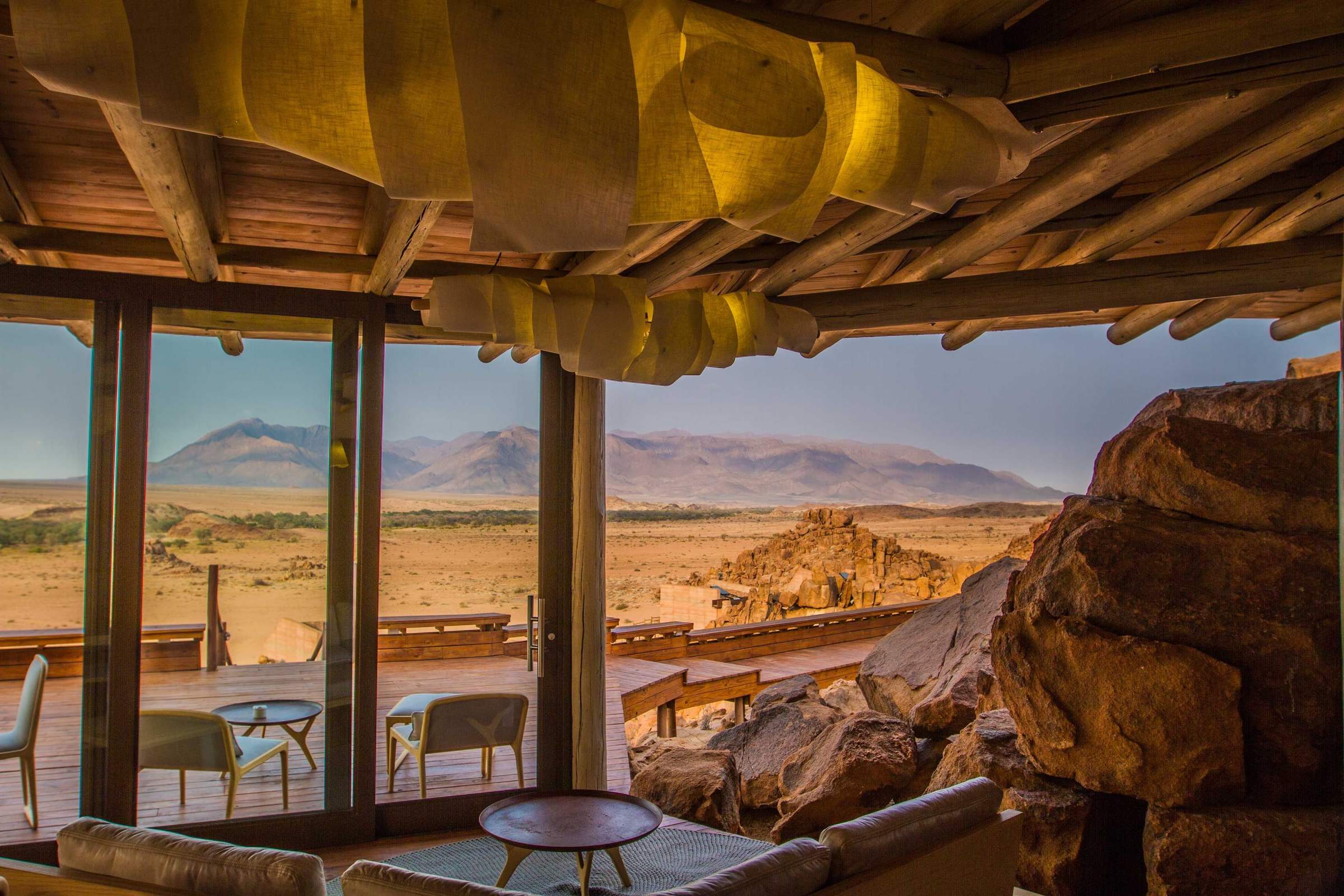
Sorris Sorris Lodge
Overlooking the Brandberg Massif, Sorris Sorris is probably the most luxurious lodge in southern Damaraland.
When to go to Damaraland
Our month by month guide: What it's like to visit Spitzkoppen Lodge in Damaraland
Jan
Feb
Mar
Apr
May
Jun
Jul
Aug
Sep
Oct
Nov
Dec
Damaraland in January
In Damaraland, January marks the start of the rainy season. The rains, though often light and localised, bring life to the desert landscape.
At Twyfelfontein, the rock engravings glisten after sporadic showers. Some days are clear and hot, with temperatures around 30°C/86°F, while others see dramatic thunderstorms. These can create flash floods in ephemeral riverbeds like the Ugab, temporarily transforming the arid terrain. The greening landscape provides a refreshing backdrop for the ancient rock art at Brandberg Mountain.
Many birds in the region are in full breeding plumage, with migrant species adding to the variety. Wildlife, including the desert-adapted elephants, disperses across the rejuvenated landscape, making sightings more challenging, but rewarding. The Damara Living Museum offers insights into how local communities adapt to these seasonal changes.
- Variable weather: hot, dry or humid with rain
- Occasional localised thunderstorms
- Wildlife dispersed, harder to spot
- Stark mountains against atmospheric skies
- Few tourists, low rates at accommodations
Our view
This is not a great time to visit
Weather in January
Damaraland in February
February is typically the wettest month in Damaraland, though rainfall remains patchy across this predominantly arid region.
The Spitzkoppe granite peaks against thunderous, atmospheric skies create dramatic vistas for photographers. Some days are clear and hot, while others see afternoon thunderstorms that briefly but dramatically charge the landscape. These rains can make travel more challenging, especially to remote sites like the Epupa Falls. However, the landscape feels vibrant and alive, with insects and smaller animals more easily spotted, and seasonal flowers blooming. Many birds and animals are raising their young, offering unique wildlife viewing opportunities.
Despite the rains, the rock art at Twyfelfontein and the Petrified Forest remain accessible.
- Hot and humid with occasional rain showers
- Thunderstorms meander over the landscape
- Birdlife spectacular, migrant species present
- Wildlife harder to see, but landscape lush
- Low tourist numbers, great for solitude
Our view
This is not a great time to visit
Weather in February
Damaraland in March
March in Damaraland usually sees the main rains tailing off, though precipitation varies greatly across the region. Many days are clear, with strong sun driving temperatures up, while others may experience light rainfall.
The landscape often appears vivid and green, providing a striking contrast to the bare rocky outcrops of Spitzkoppe and Brandberg. Animals such as springbok and mountain zebra may be finishing raising their young. Small herds of plains game such as these can be more visible against the greener backdrop. The Damara Living Museum showcases how local communities adapt to these seasonal changes. The clearer skies towards the end of the month make for excellent stargazing at lodges where you can move your bed to sleep under the stars.
- Weather becoming drier as month progresses
- Animals looking healthy after months of plenty
- Balmy nights sleeping under star-filled skies
- Migrant birds begin to depart
- Few tourists, rates often low at lodges
Our view
A good time to visit, with pros & cons
Weather in March
Damaraland in April
April in Damaraland is typically dominated by dry weather, with decreasing chances of rain. Temperatures begin to fall, but days remain pleasantly warm. The rains often leave the landscape verdant, creating stunning photo opportunities at sites like the Etendeka Plateau and Klip Valley.
Animals are in fantastic condition, often with fast-growing young in attendance. The desert-adapted elephants may be more easily spotted as they begin to return to the riverbeds to feed on Ana and Camelthorn trees. With dust washed from the atmosphere, photographers can capture clear shots of spectacular landscapes. Stargazers will enjoy increasingly clear night skies. In the Palmwag Concession, water and food remain in plentiful supply, so finding mammals such as black rhino can still be challenging, but worth the effort.
- Cooler nights, days still warm and pleasant
- Landscape still green from recent rains
- Air clear, for crisp photographs
- Wildlife starting to become easier to find
- Easter sees an increase in visitors
Our view
A good time to visit, with pros & cons
Weather in April
Damaraland in May
By May, Damaraland is usually drying out fast. If rains have been good, the land remains green, especially around natural springs found in valleys and craggy rocksides. The air quality and clarity can be amazing, making this an ideal month for photography at sites like Twyfelfontein and along the remote Hoanib riverbed.
Temperatures are moderate, typically warm with crisp, clear mornings and blue skies. Evenings are cool enough to wear an extra layer. Many lodges still charge low season prices, offering good value. The combination of increasingly good wildlife sightings, beautiful landscapes, and crystal-clear air make May one of the best months to visit Damaraland. It's an excellent time to explore the region's geological wonders, such as the ancient Etendeka lava flows.
- Lovely weather: warm days, cool nights
- Landscape drying out, still some greenery
- Clear, sharp colours for photography
- Wildlife more visible along scenic riverbeds
- Low visitor numbers, moderate lodge rates
Our view
A very good time to visit
Weather in May
Damaraland in June
June sees Damaraland dry and clear, with blue, largely cloudless skies. Days are often lovely and warm, but nights can be cold, sometimes below freezing in desert areas.
Visitors should pack warm clothing for early morning nature drives to spot desert-adapted elephants or black rhinos. Most outdoor pools are too cold for swimming, except for the very dedicated. It’s a particularly good climate for walking; either short walks or perhaps a multi-day hike on the Etendeka Plateau.
Historically, June prices have been low, but Damaraland's increasing popularity means many lodges now consider it high season.
- Clear, bright days and cold nights
- Wonderful for stargazing and night walks
- Good wildlife viewing in remote wildernesses
- Hiking comfortable in cooler temperatures
- Moderate lodge rates, increasing bookings
Our view
A very good time to visit
Weather in June
Damaraland in July
July in Damaraland offers fairly warm temperatures above 20°C/68°F in the middle of the day, but often cold nights. Visitors should dress in layers and be prepared for chilly mornings and evenings.
Rain is extremely rare, and clear skies make for great photographs of the sandstone mountains in morning and evening light. As vegetation shrivels, animals gather near food and water sources, making sightings of desert-adapted wildlife more likely. Elephant herds are more regularly seen along dry riverbeds during this period.
Lodges charge high season rates, and many are booked up well in advance, especially during European school holidays.
- Dry days, clear skies, crisp cold nights
- Peak time for wildlife viewing in Damaraland
- Desert-adapted elephants more easily spotted
- Wonderfully cool for day walks and longer hikes
- High season rates, book accommodations early
Our view
A very good time to visit
Weather in July
Damaraland in August
August is the height of Damaraland's winter. Expect cloudless skies and usually warm sun during the day, but nights can drop to freezing in desert areas. Visitors should bring warm clothes for nature drives and walks in chilly mornings and evenings.
The landscape begins to change from green to golden grasses and stark hillsides. Wildlife sticks close to dry river-beds where desert-adapted elephants dig for water, creating waterholes for other animals.
The clear, dry conditions make it an excellent time for hiking and exploring geological features like the Organ Pipes and Burnt Mountain.
August is the most popular time to visit Damaraland, especially for families. Booking well in advance is essential.
- Perfect weather for outdoor activities
- Excellent wildlife viewing opportunities
- Popular time for hiking and tracking rhino on foot
- Good time for cultural experiences at Damara Living Museum
- Peak season, lodges booked up well in advance
Our view
Fantastic: the very best time to visit
Weather in August
Damaraland in September
September in Damaraland brings blue, cloudless skies and fantastic wildlife viewing. Rain is almost unheard of, and as the month progresses, days and nights quickly get warmer. Daily maximums can reach the low 30s Celsius/mid-80s Fahrenheit, though low humidity keeps it comfortable. The air becomes dustier, occasionally affecting visibility for photographers at sites like Twyfelfontein or Brandberg.
In the Palmwag Concession and along the Ugab River, animals congregate around remaining water sources, making September one of the best months for game viewing, especially for desert-adapted elephants and black rhinos, but also desert-adapted lion. It's a popular month for visitors, particularly safari enthusiasts seeking sightings of these unique sub-species.
The Himba at Khowarib provide insights into how local communities adapt to the dry season.
- Warm days, nights getting warmer
- Landscape golden brown, very photogenic
- Prime time for seeing desert-adapted wildlife
- Air can be hazy with dust
- High season rates, book well in advance
Our view
Fantastic: the very best time to visit
Weather in September
Damaraland in October
Damaraland is usually at its hottest and driest in October. Temperatures build throughout the month, with daily highs potentially exceeding 40°C/104°F towards the end. The extreme dryness, though, makes even these high temperatures bearable.
Wildlife watching is at its best, particularly in areas like the remote Palmwag Concession and along the Hoanib River. October is popular among wildlife enthusiasts, as shyer species such as brown hyena and cheetah are more regularly seen. However, dust and occasional smoke may make the air hazy, challenging landscape photographers but creating beautiful sunsets.
Visitor numbers can decrease towards the end of the month, potentially allowing for last-minute bookings at some lodges.
- Hot and dry, true desert conditions
- Wildlife congregates at remaining water
- Excellent month for photographing sunsets
- Peak tourist time, expect higher rates
- Unusual species like brown hyena more regularly seen
Our view
A very good time to visit
Weather in October
Damaraland in November
November in Damaraland is unpredictable; sometimes dry and hot, sometimes cloudier and cooler. Typically, mornings are hot and clear, with clouds gathering from the afternoon. Humidity builds, occasionally resulting in spectacular thunderstorms with convection rainfall in late afternoons. These storms are usually localised and may not reach desert areas.
Places receiving good rain, like parts of the Palmwag Concession, quickly turn green, softening the landscape. Many mammals give birth, offering unique wildlife viewing opportunities. Once rains settle in waterholes, wildlife disperses in search of food, making game viewing more challenging. However, this is an excellent time for birdwatchers, with migrant species arriving and taking on breeding plumage.
The rock art at Twyfelfontein and Brandberg can be particularly striking after light rains.
- Variable weather, possibility of rain
- New growth if rains arrive, landscape greens
- Wildlife viewing still good, with babies often born
- Shoulder season rates offer better value
- Birdlife increases with migrant arrivals
Our view
A good time to visit, with pros & cons
Weather in November
Damaraland in December
December is often a dry month between November’s short rains and the main rains in January, and is one of its hottest months. Occasional short, often spectacular thunderstorms are often highly localised and generally welcomed, clearing the air of dust and allowing plant life to flourish. This creates a green carpet across the usually arid landscape, providing food for young animals.
Wildlife, including the desert-adapted elephants, disperses widely as food is more plentiful, making game viewing in areas like the Palmwag Concession more challenging. But sightings in early December can be enjoyed and photographed at leisure often with few or no other viewers. Many birds are breeding, sporting their most colorful plumage.
Christmas and New Year fall within local summer holidays, so accommodation options can be surprisingly busy, especially in cooler areas near the coast.
- Hot days, possibility of refreshing showers
- Landscape may become green with early rains
- Good time for seeing young animals
- Desert-adapted species less concentrated
- Holiday season brings more visitors
Our view
This is not a great time to visit
Weather in December

Looking for inspiration on where to travel next?
Visit our trip chooser to explore your options and find inspiration for your perfect African adventure
Inspire me